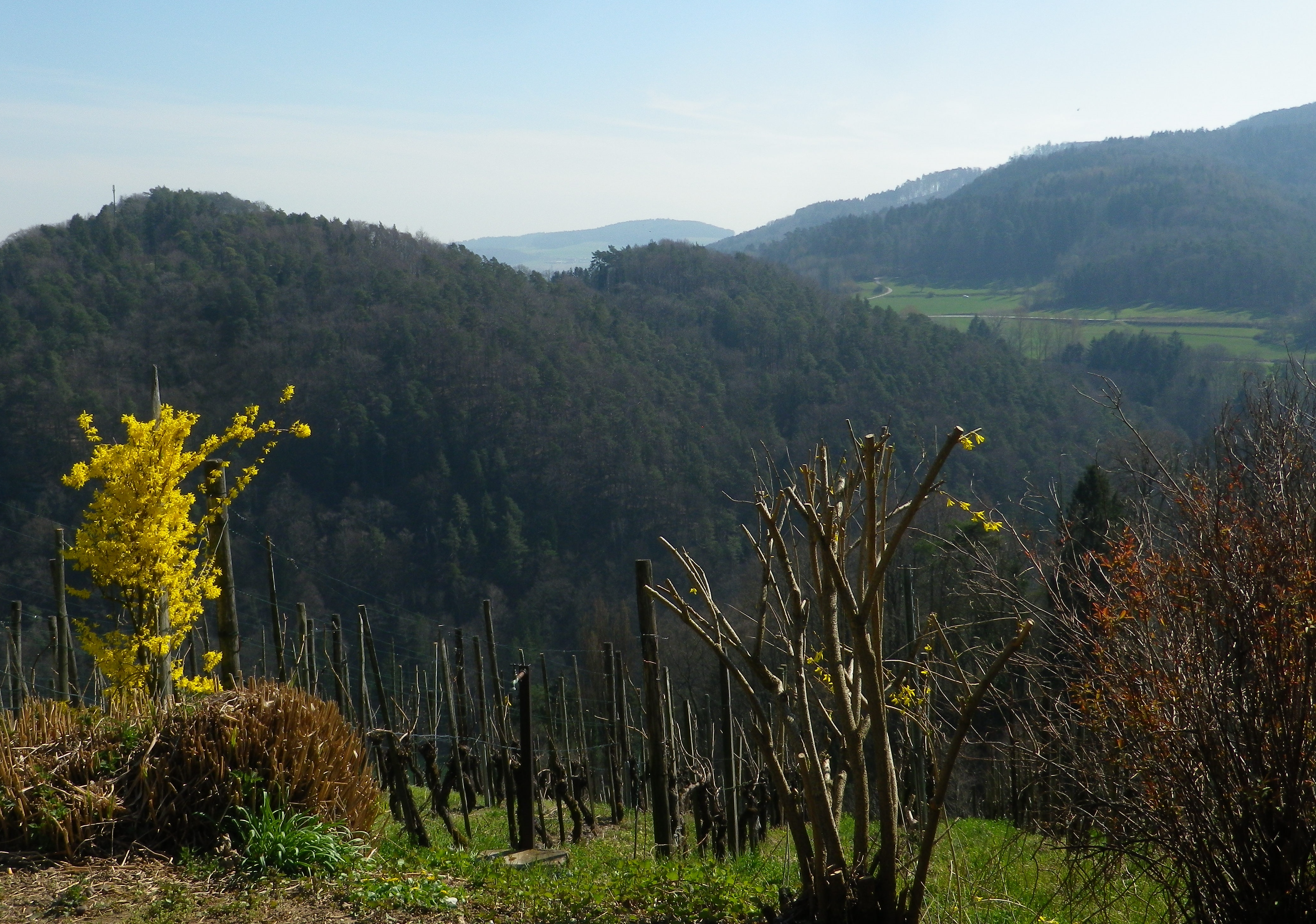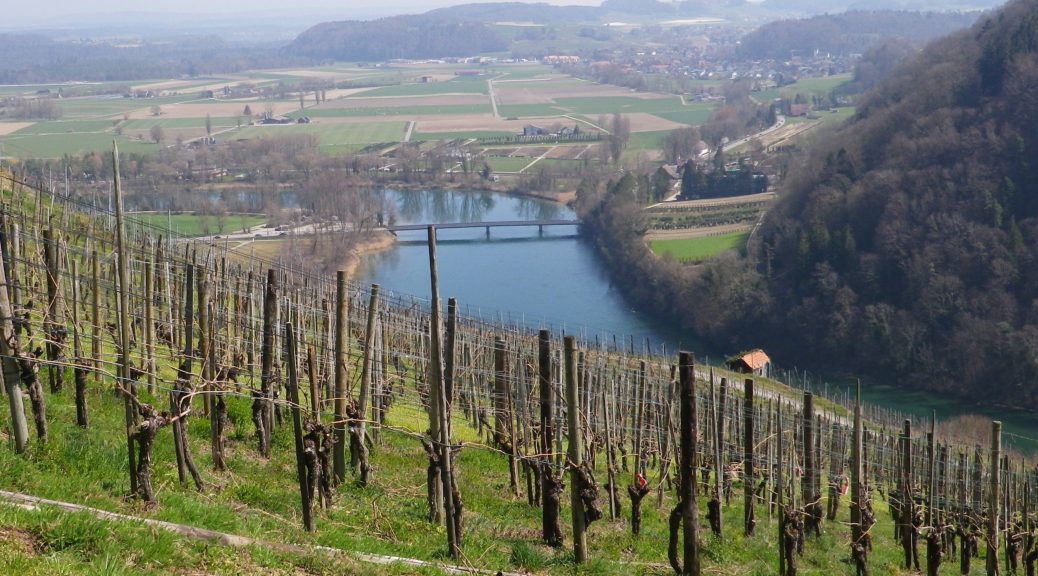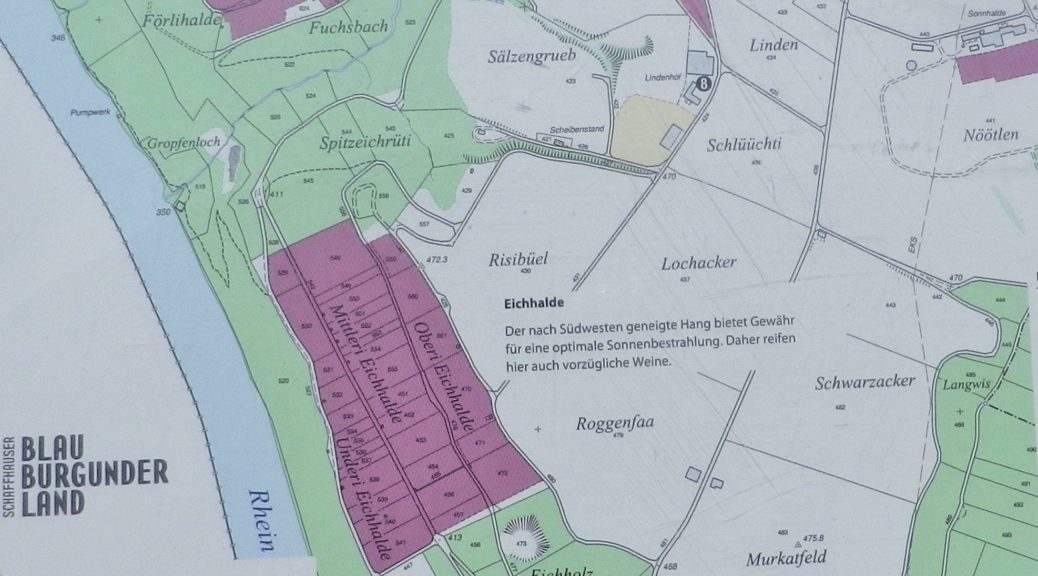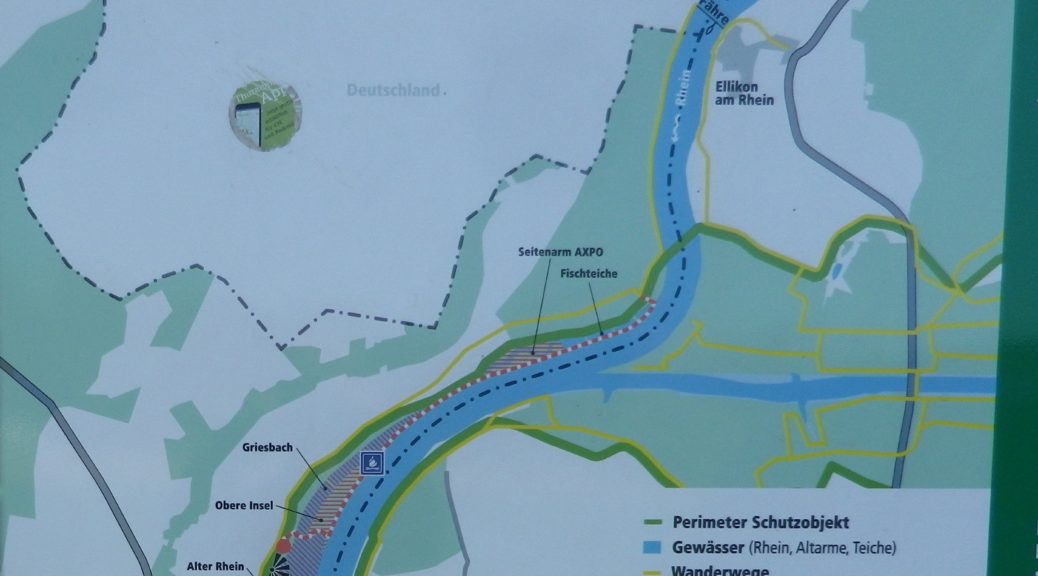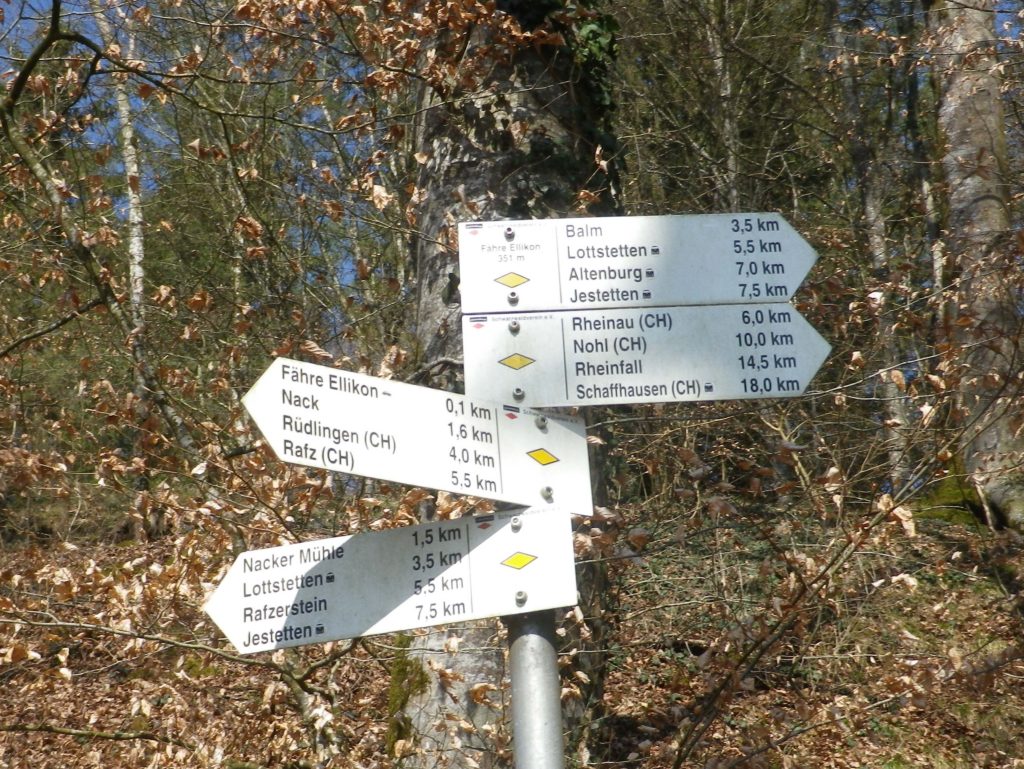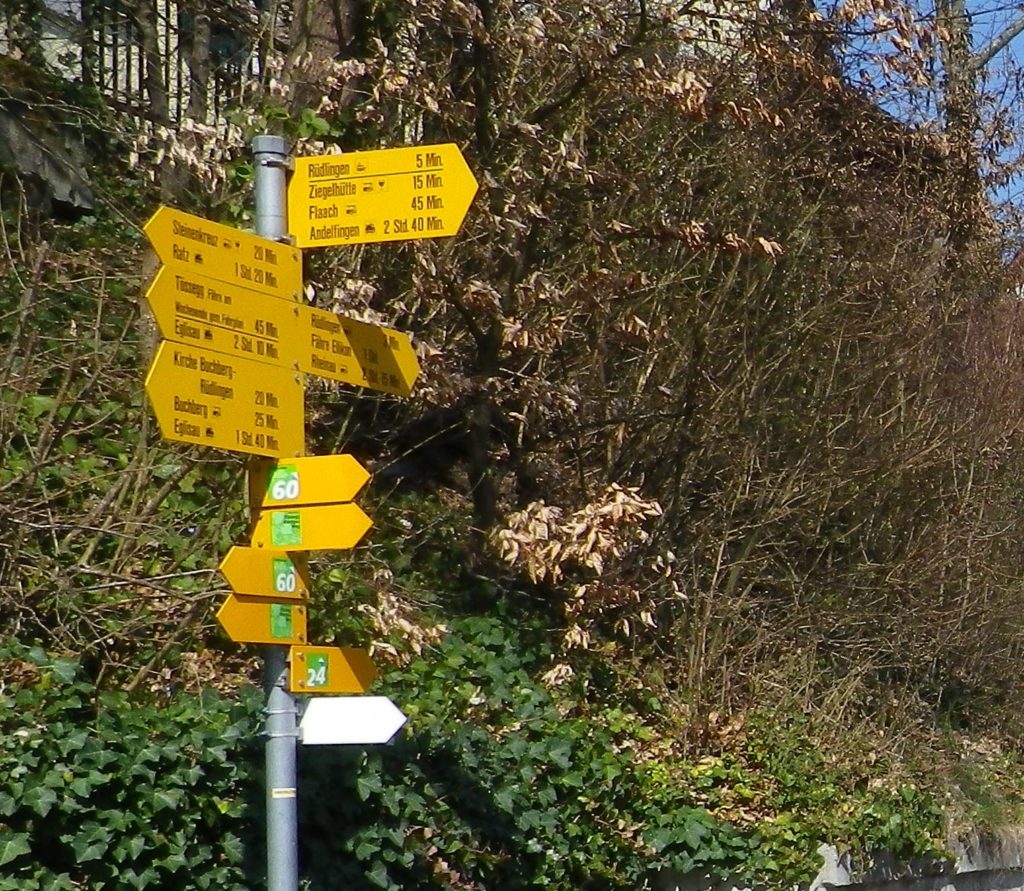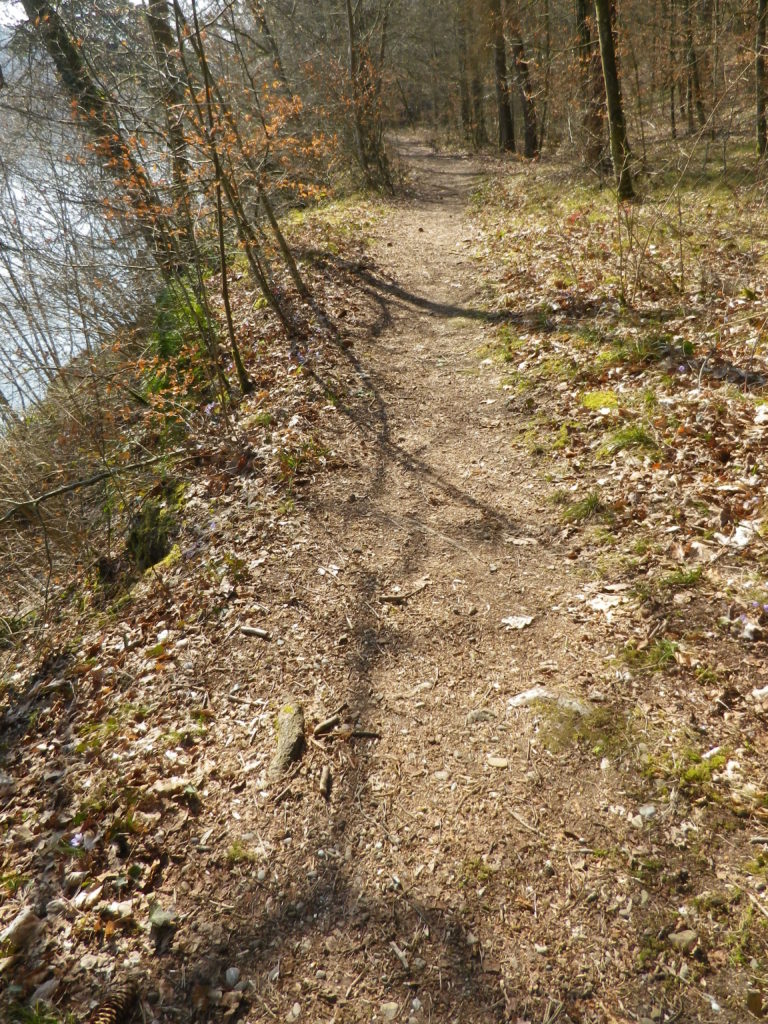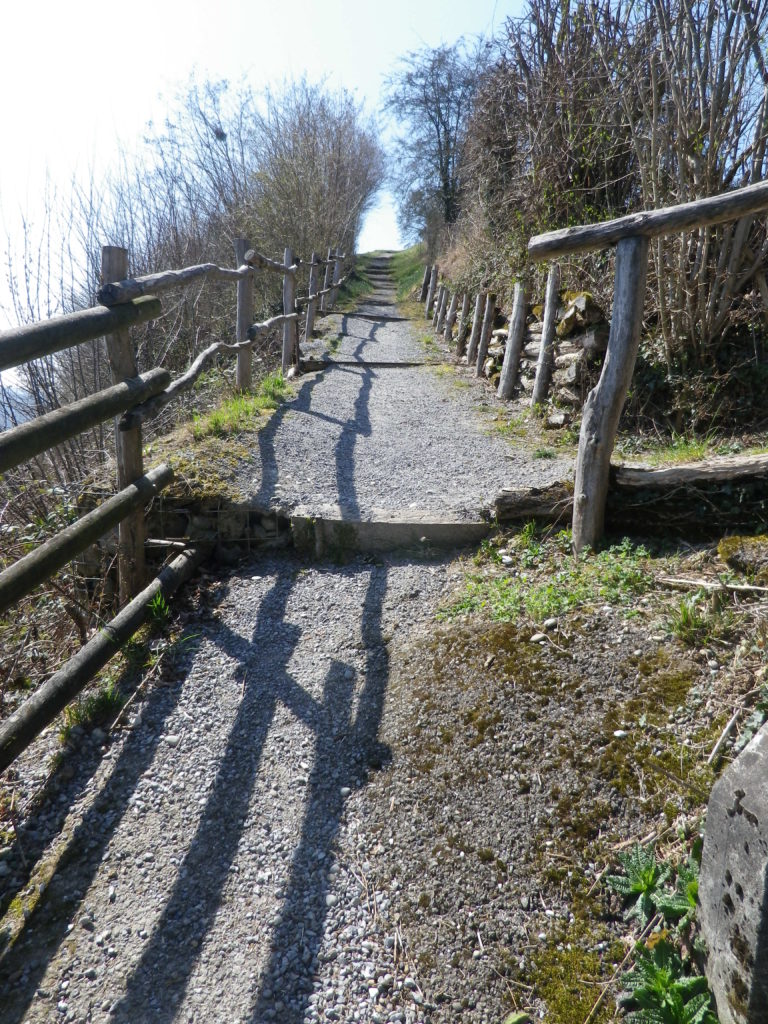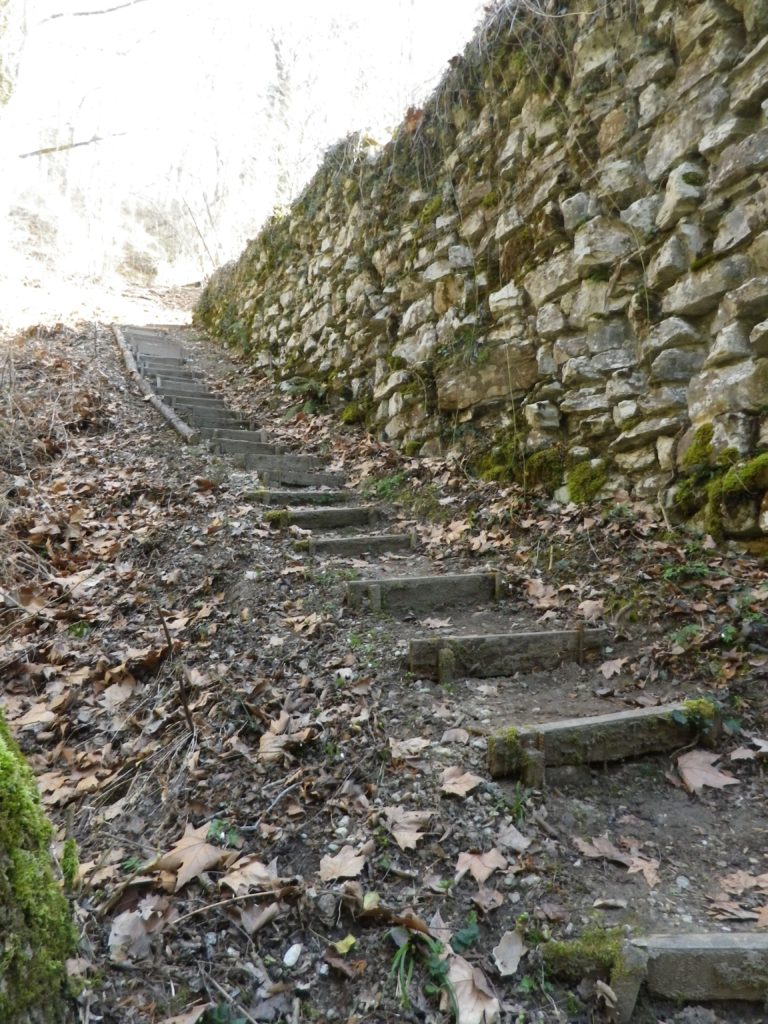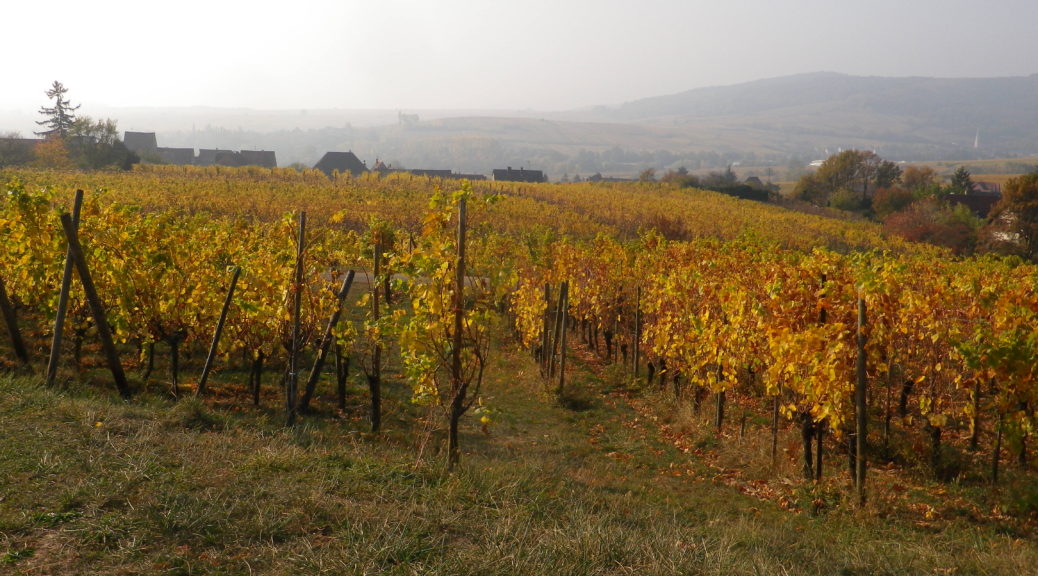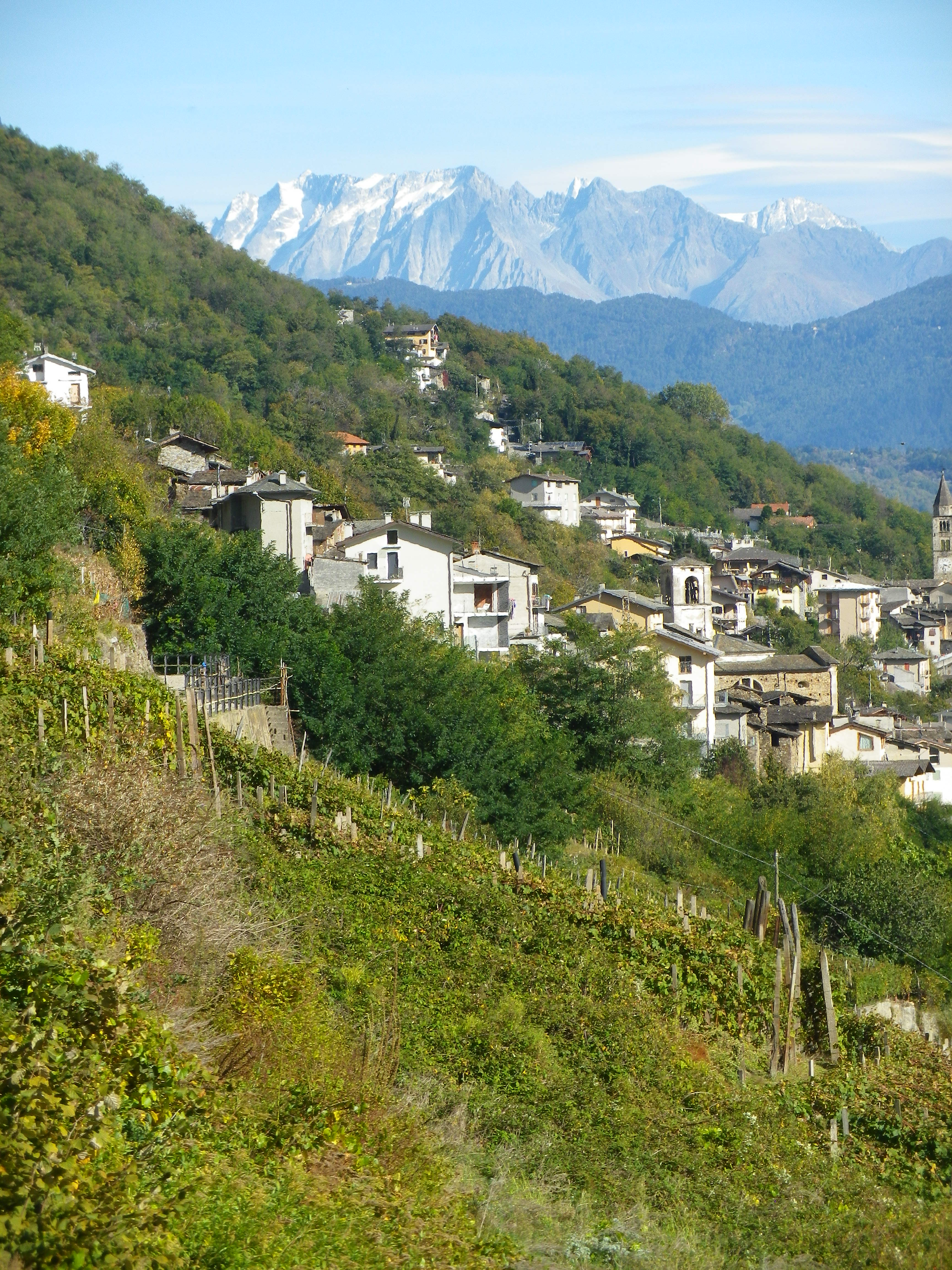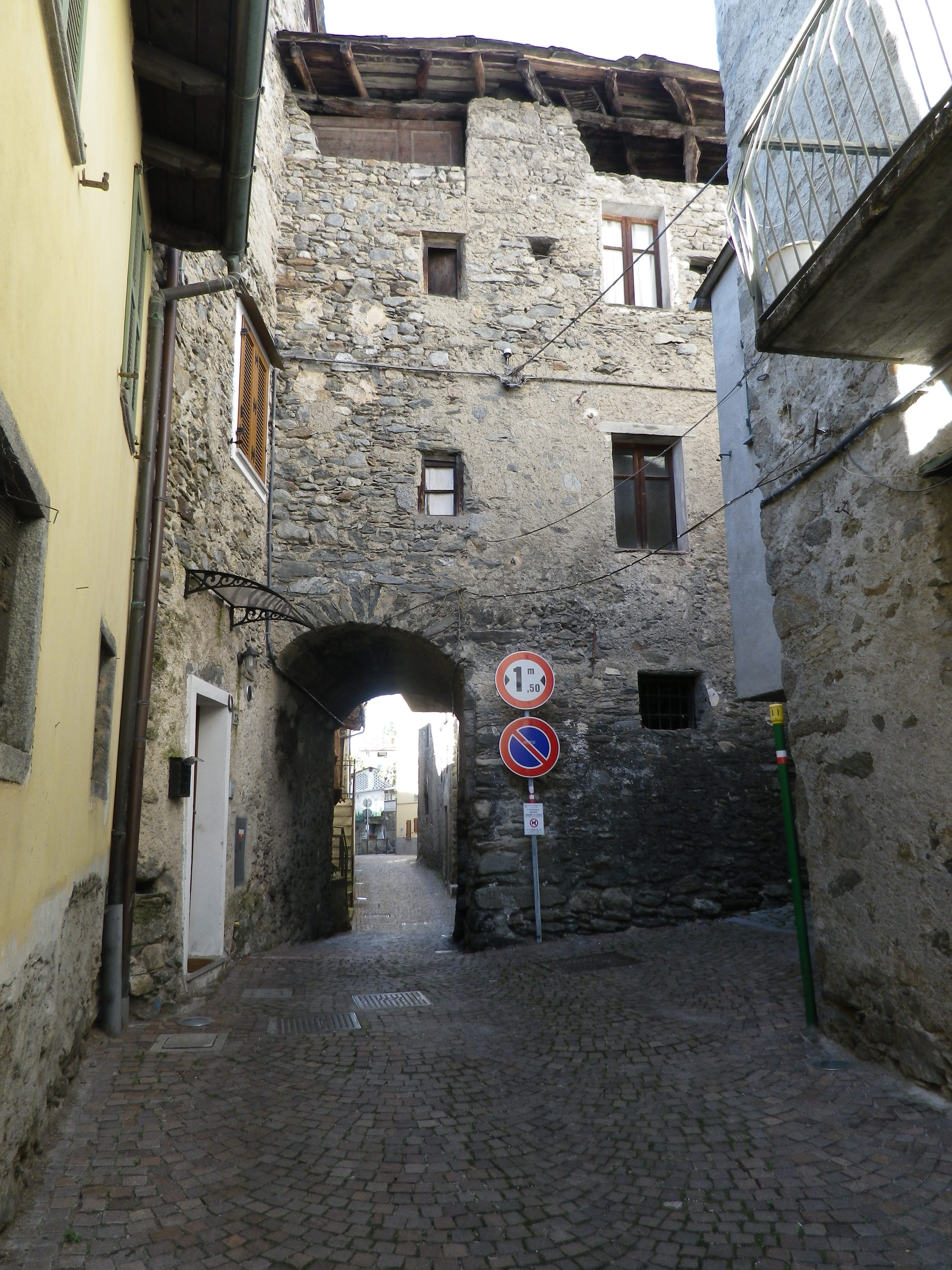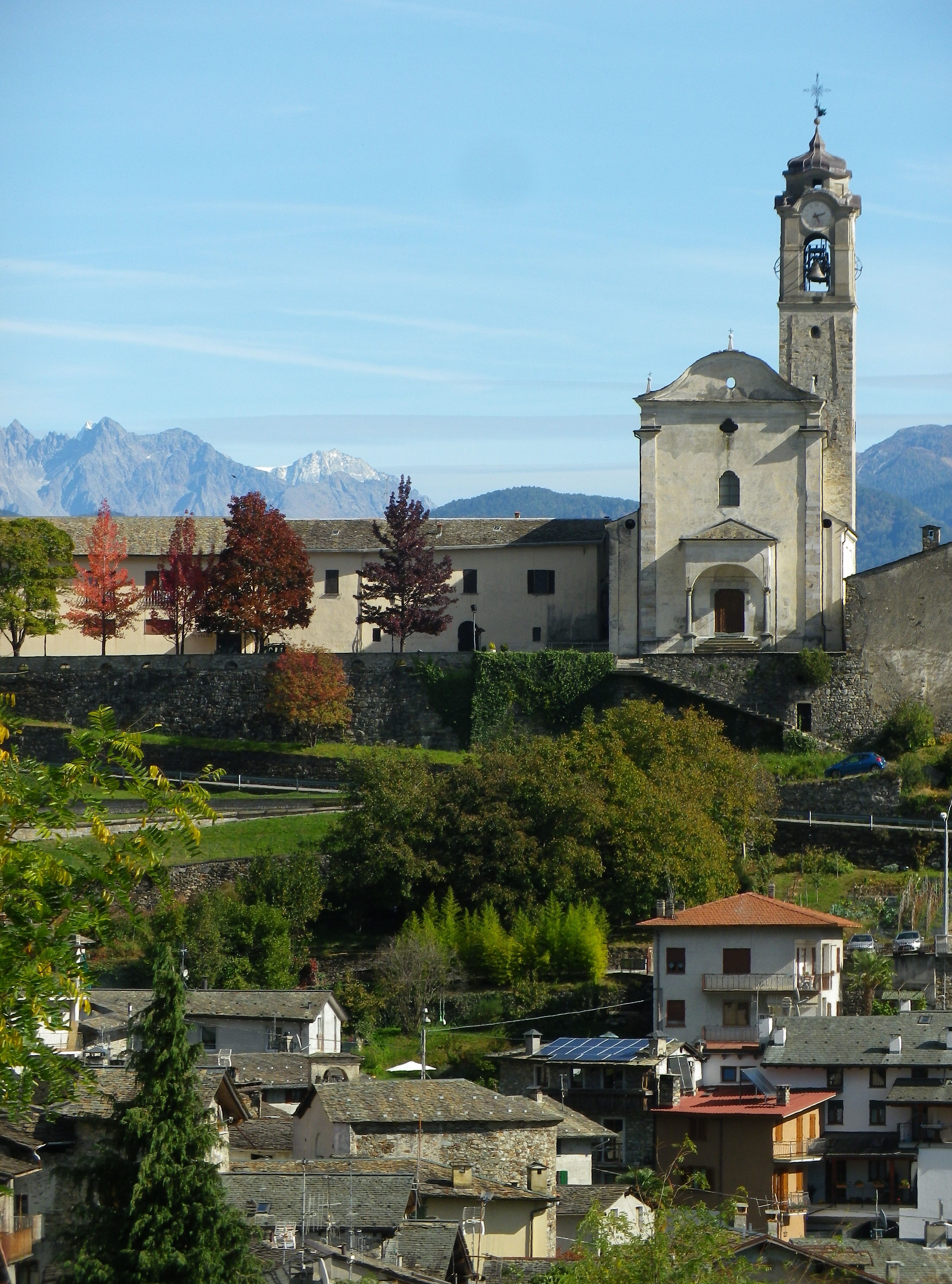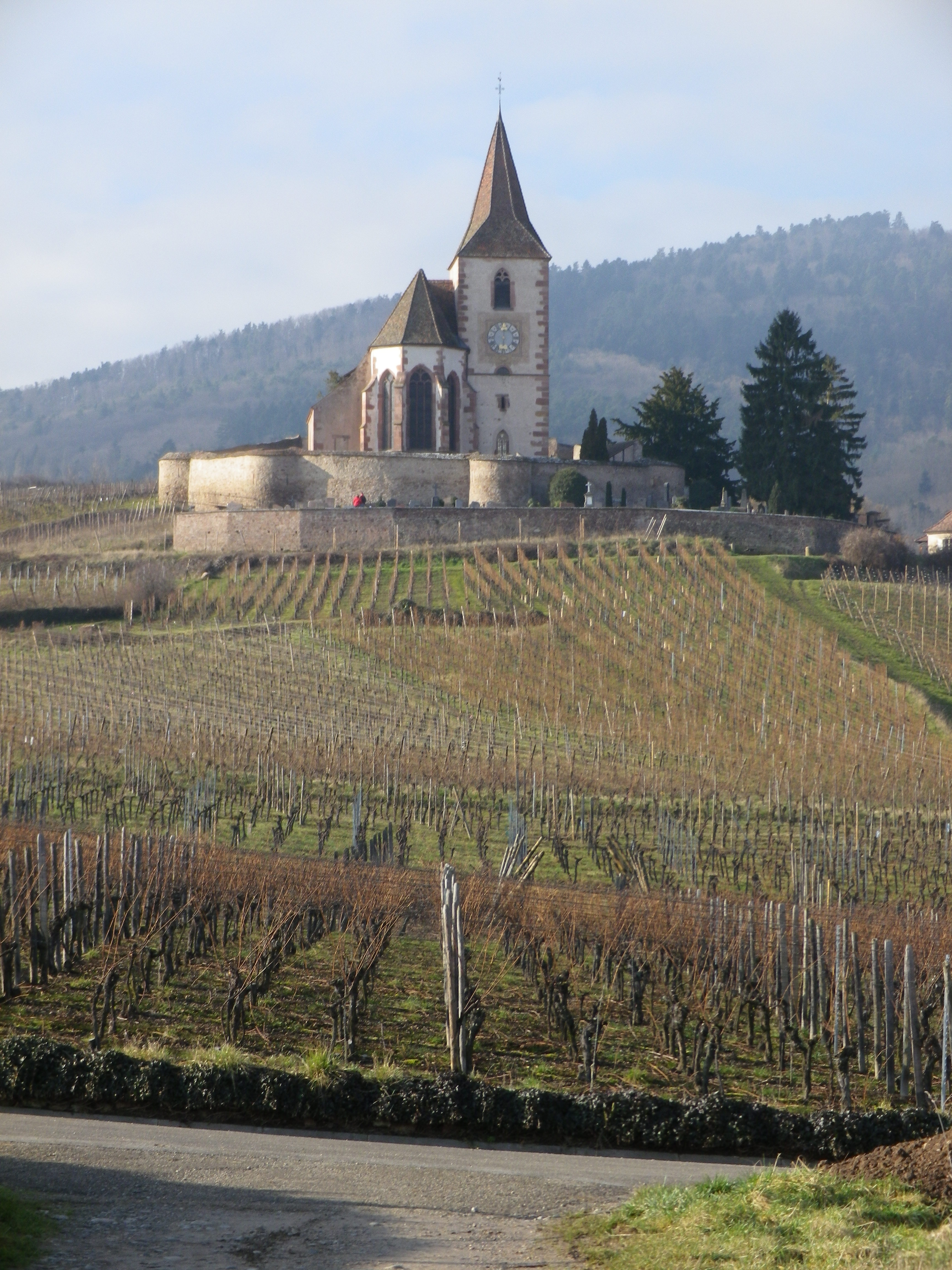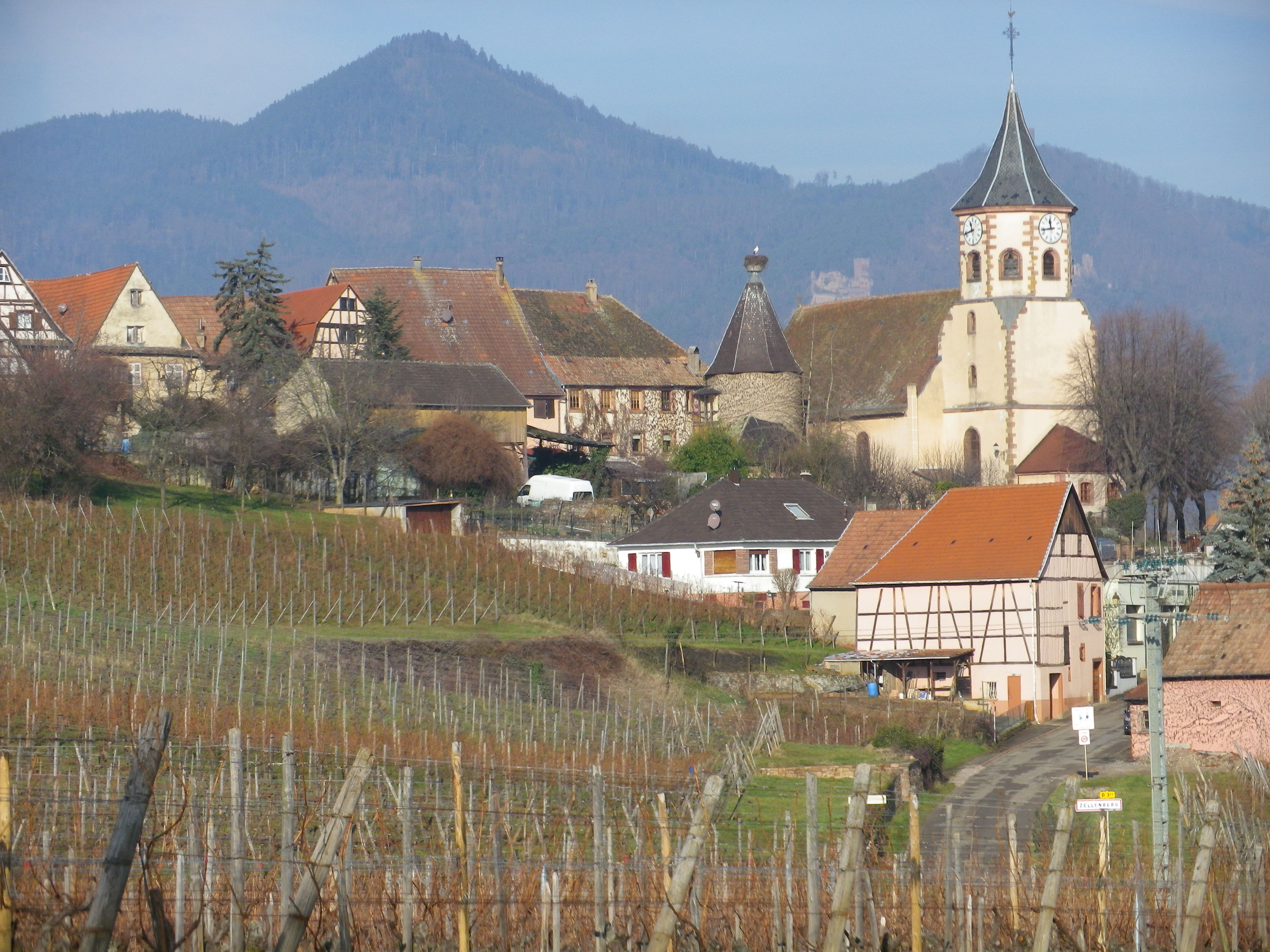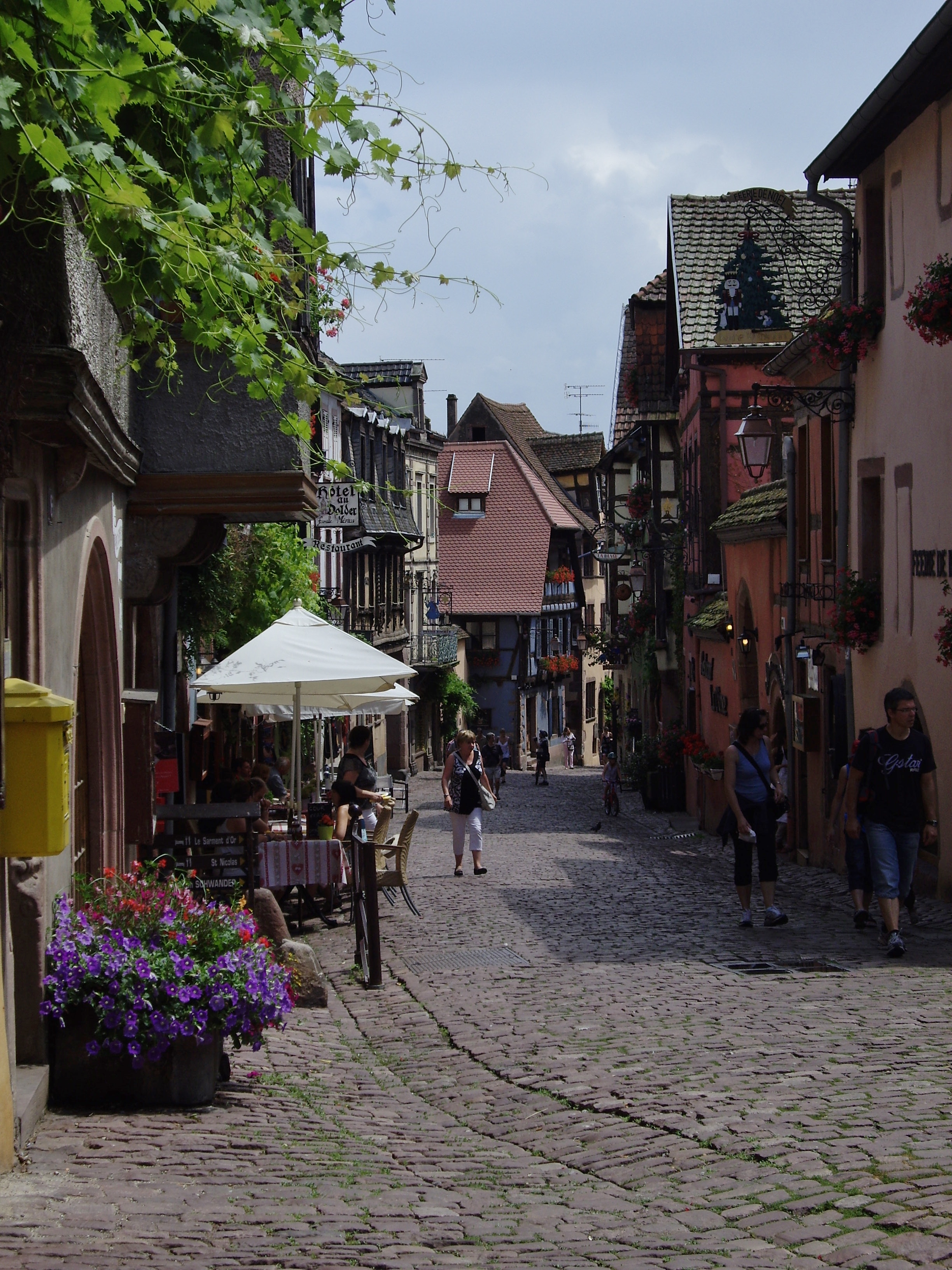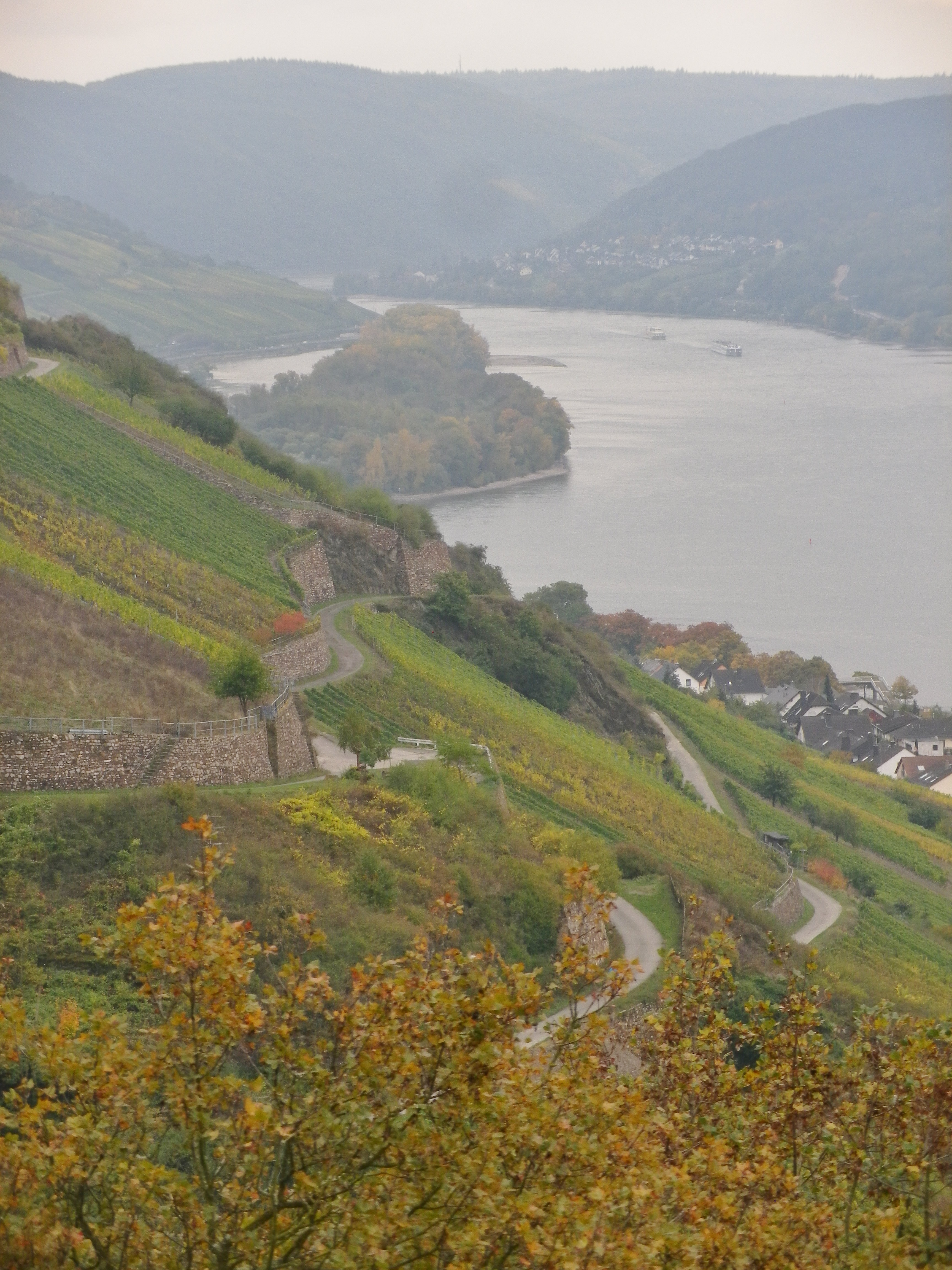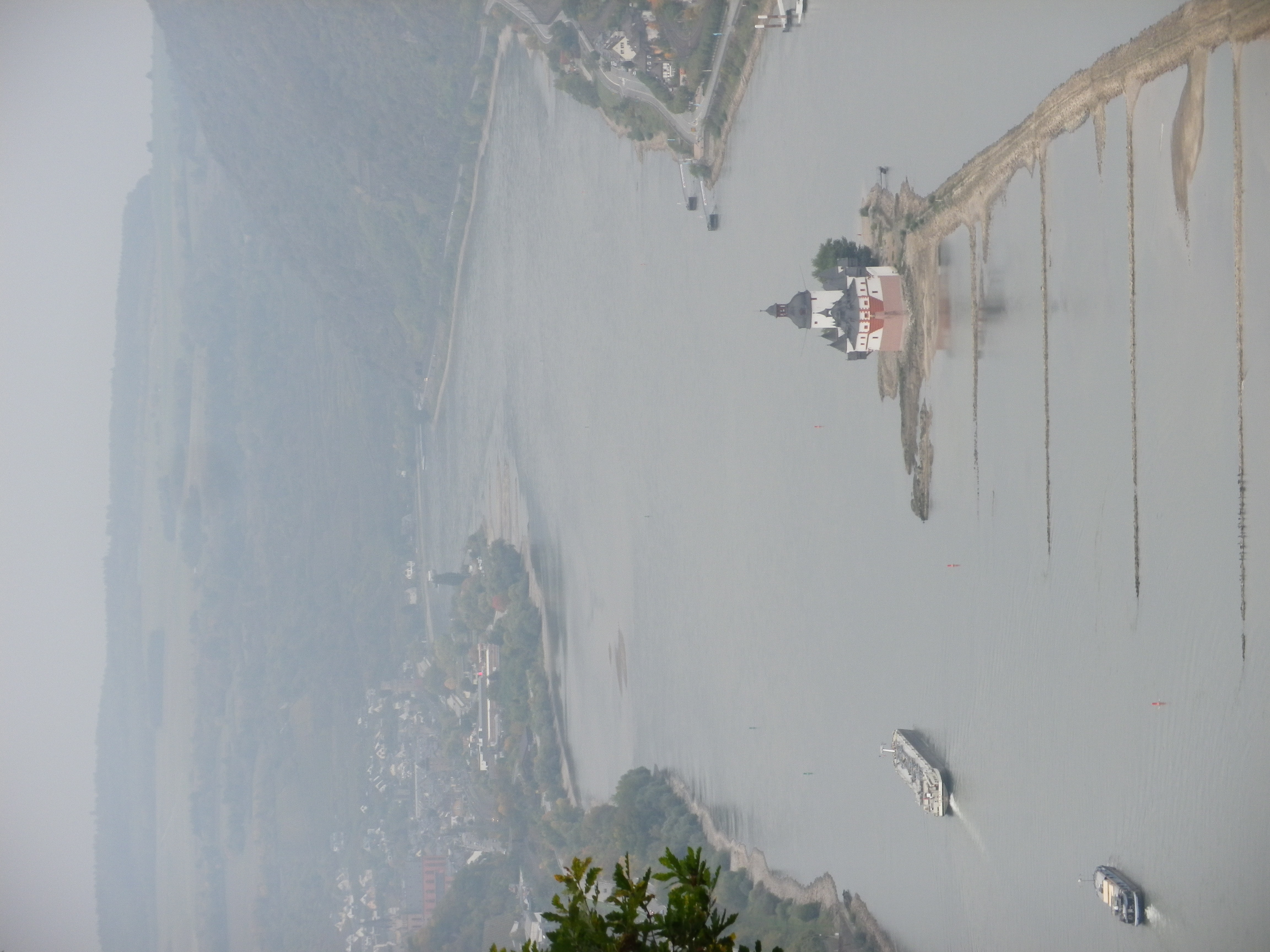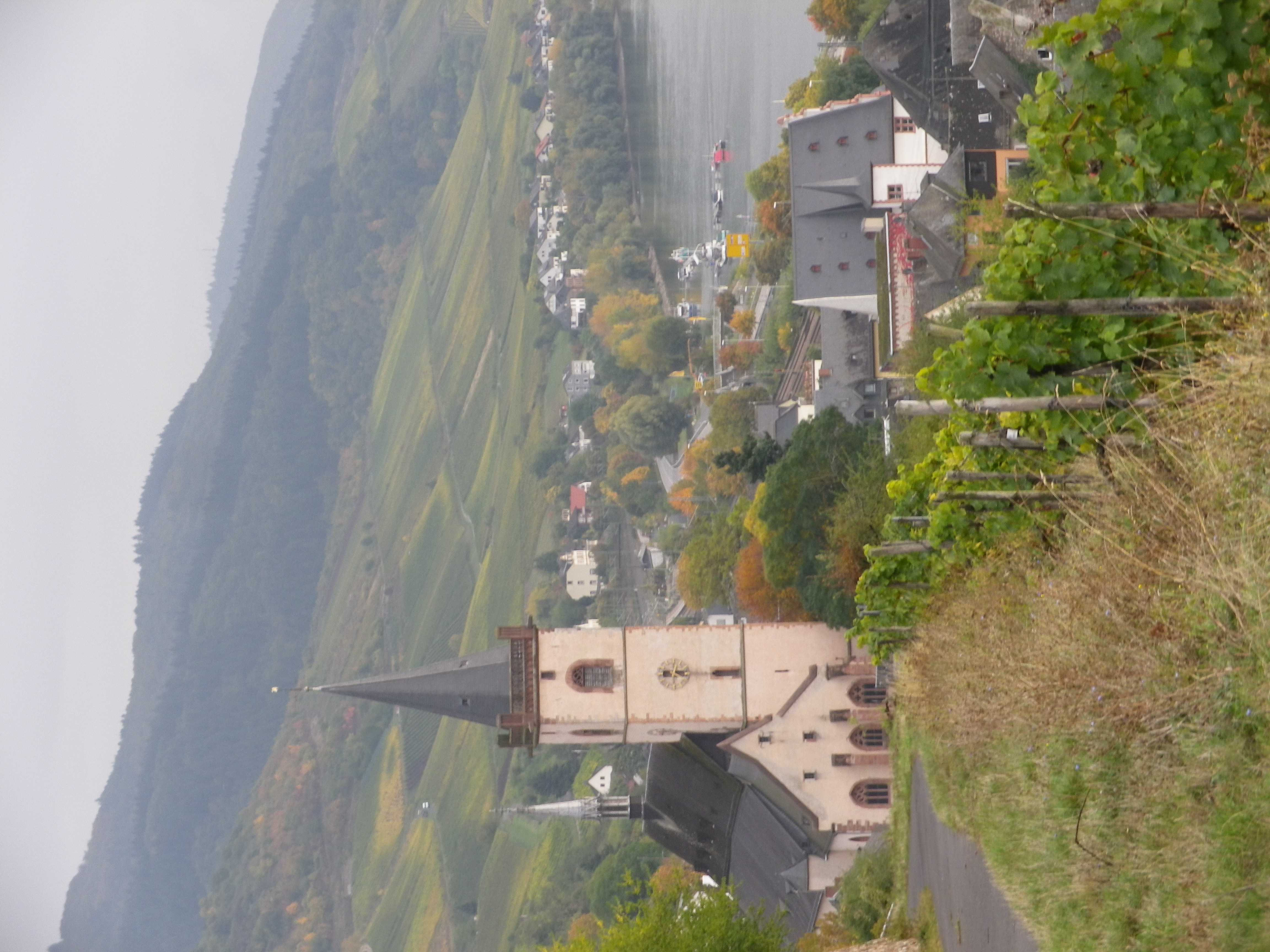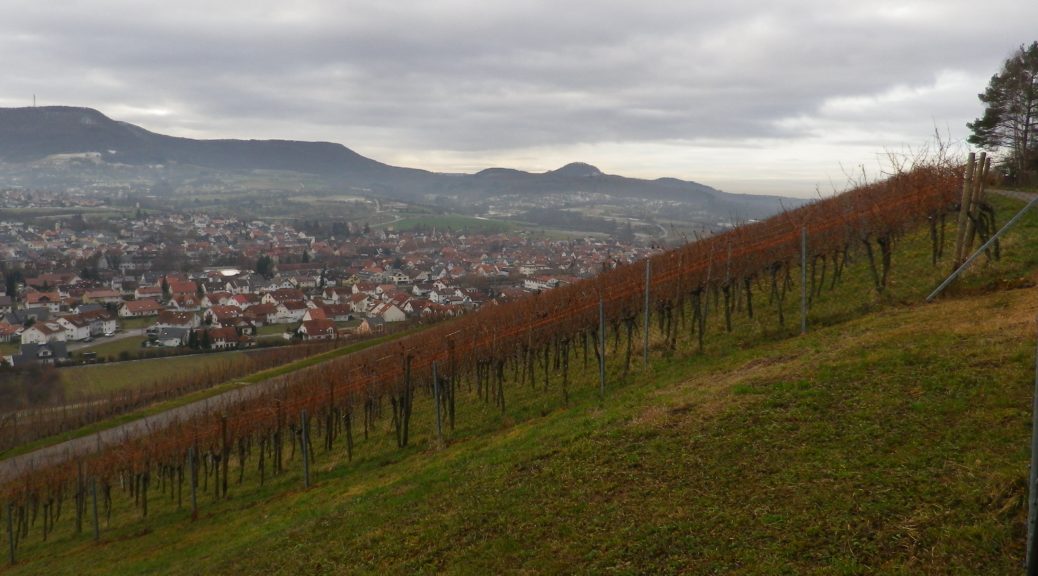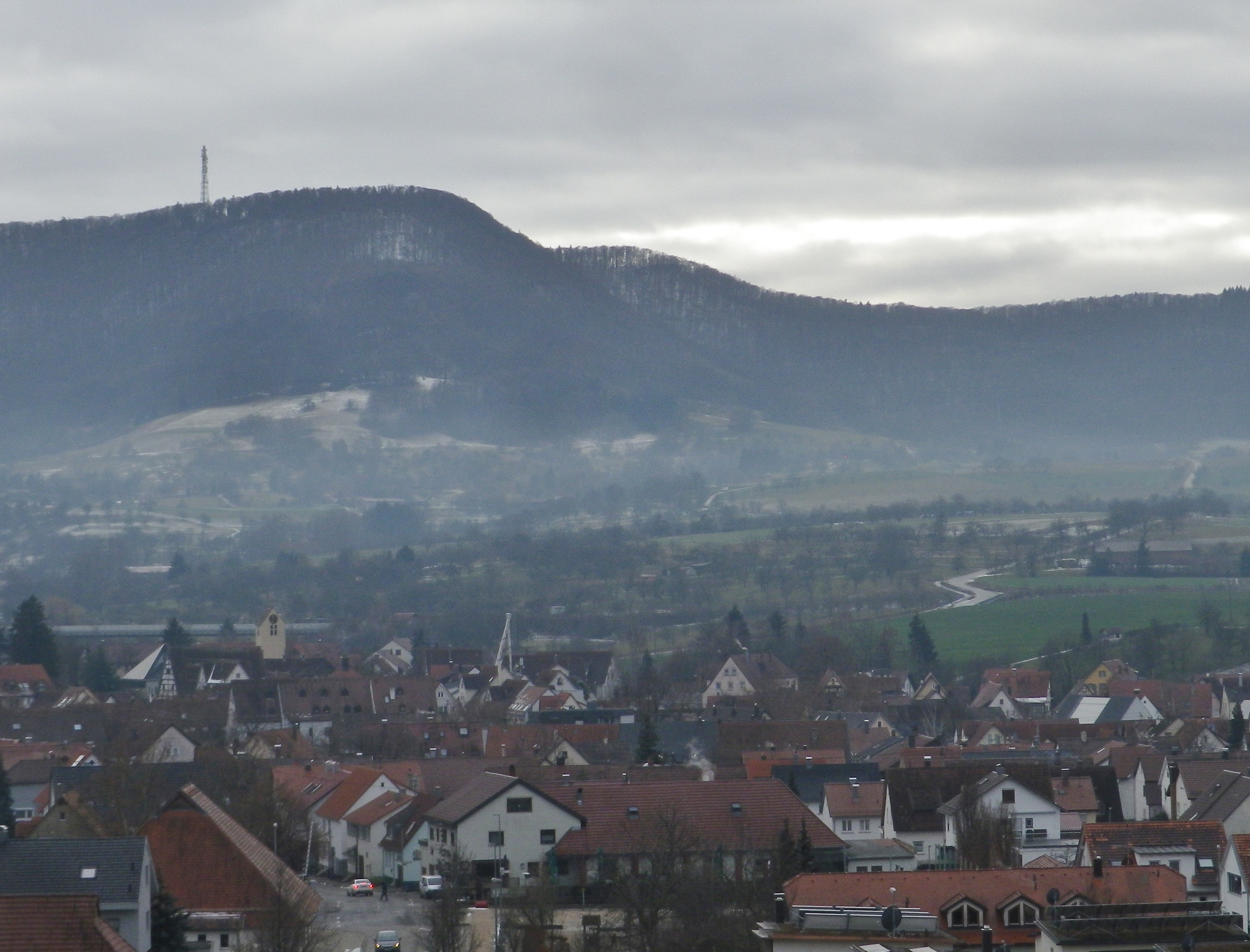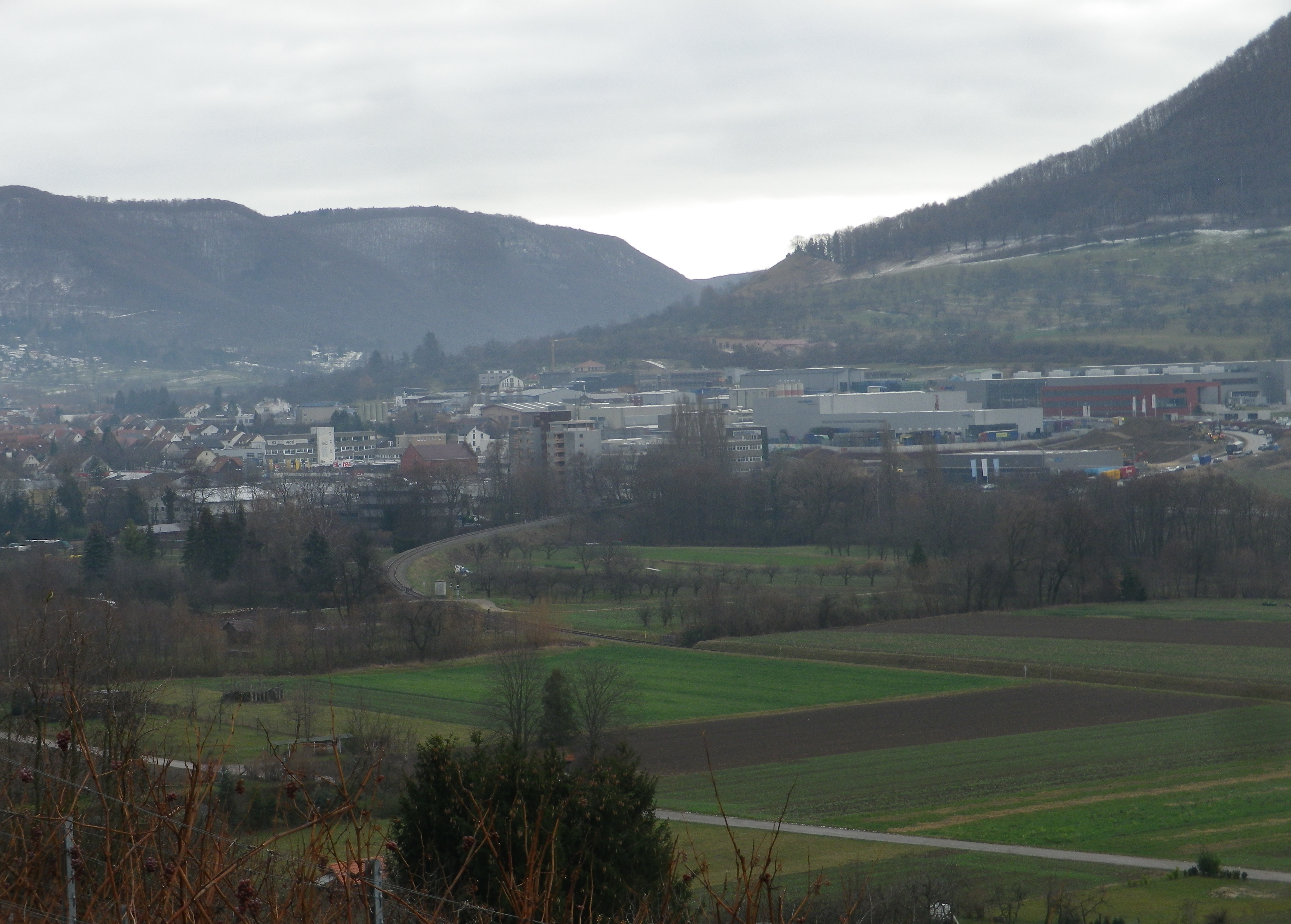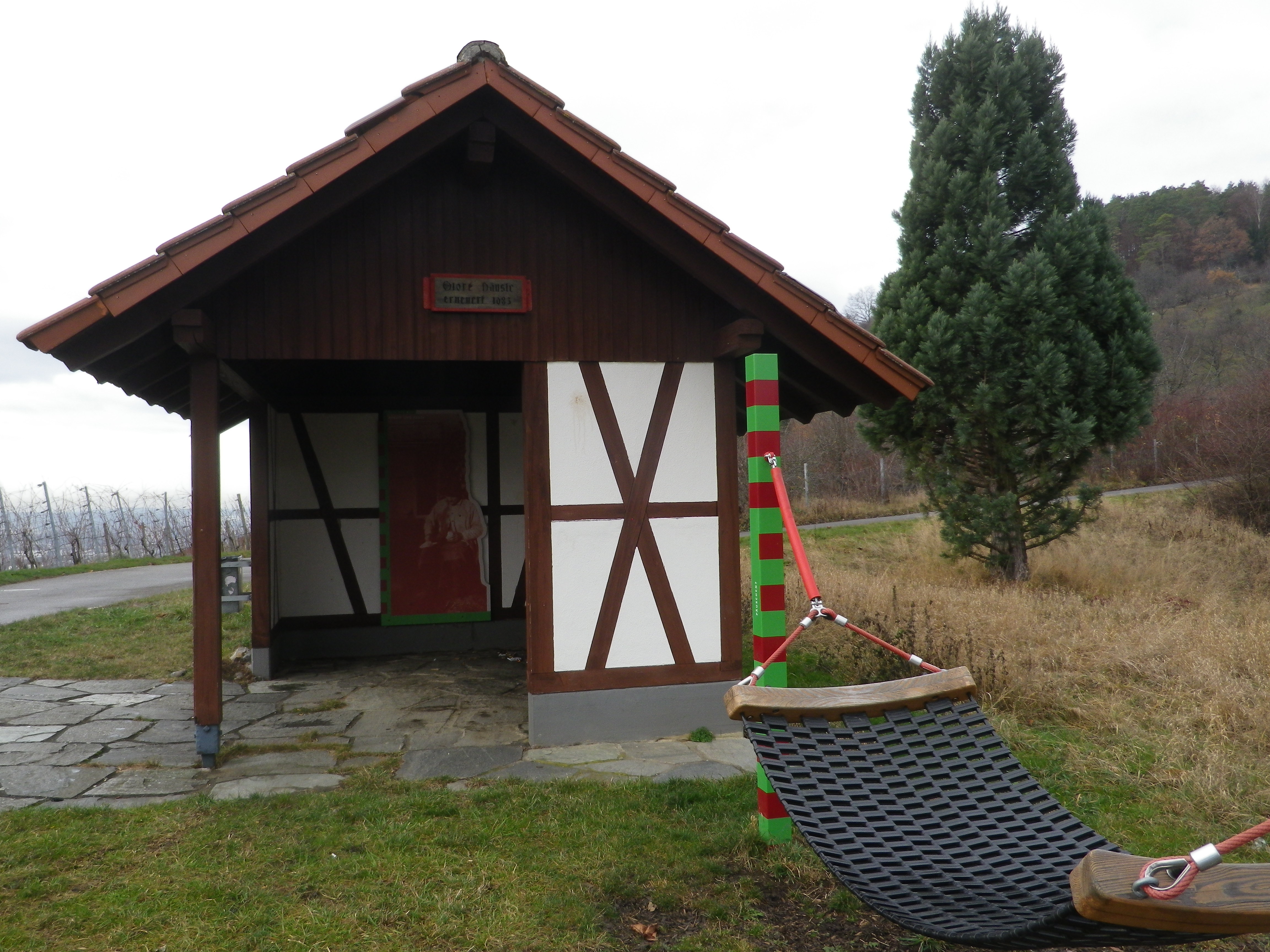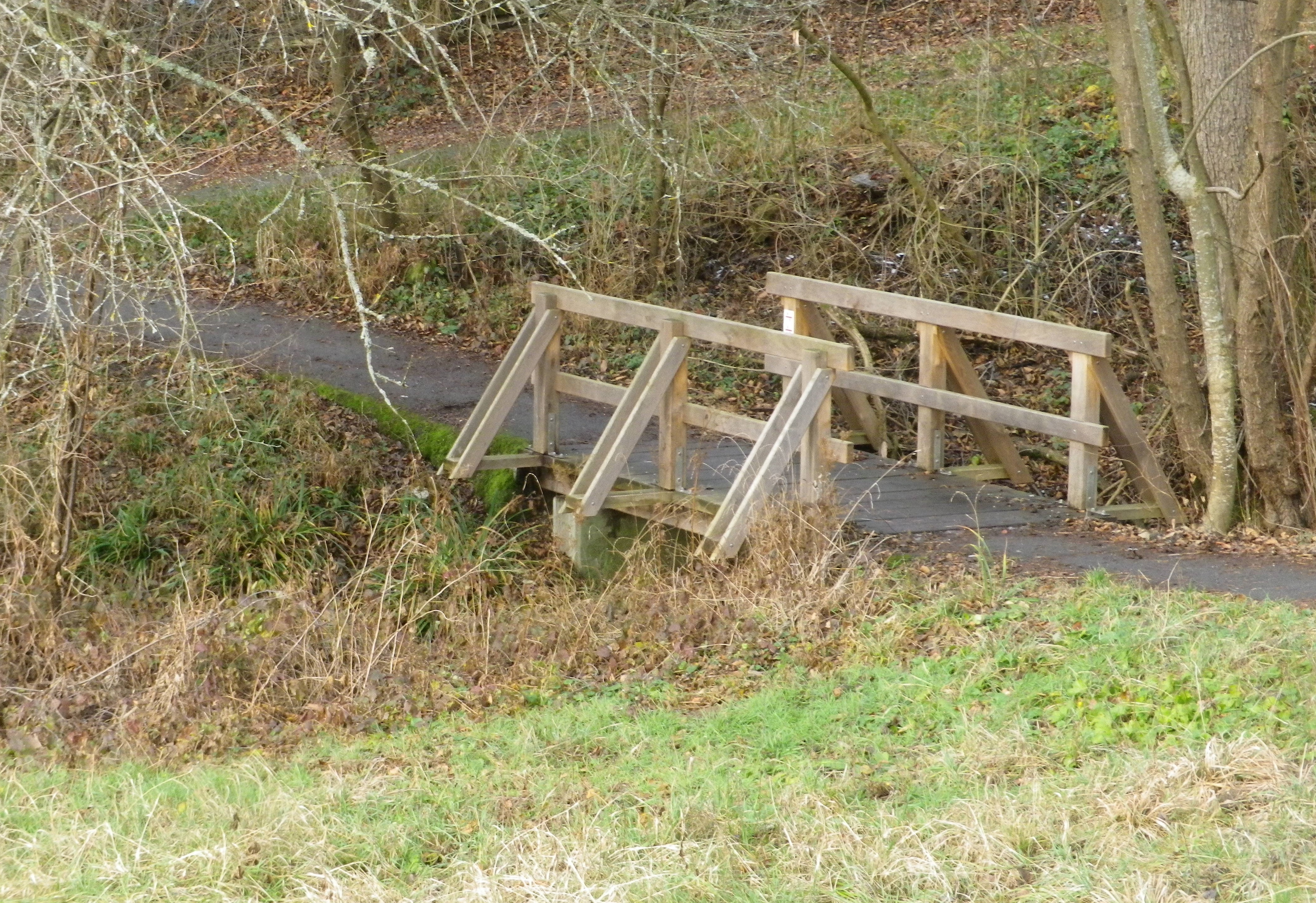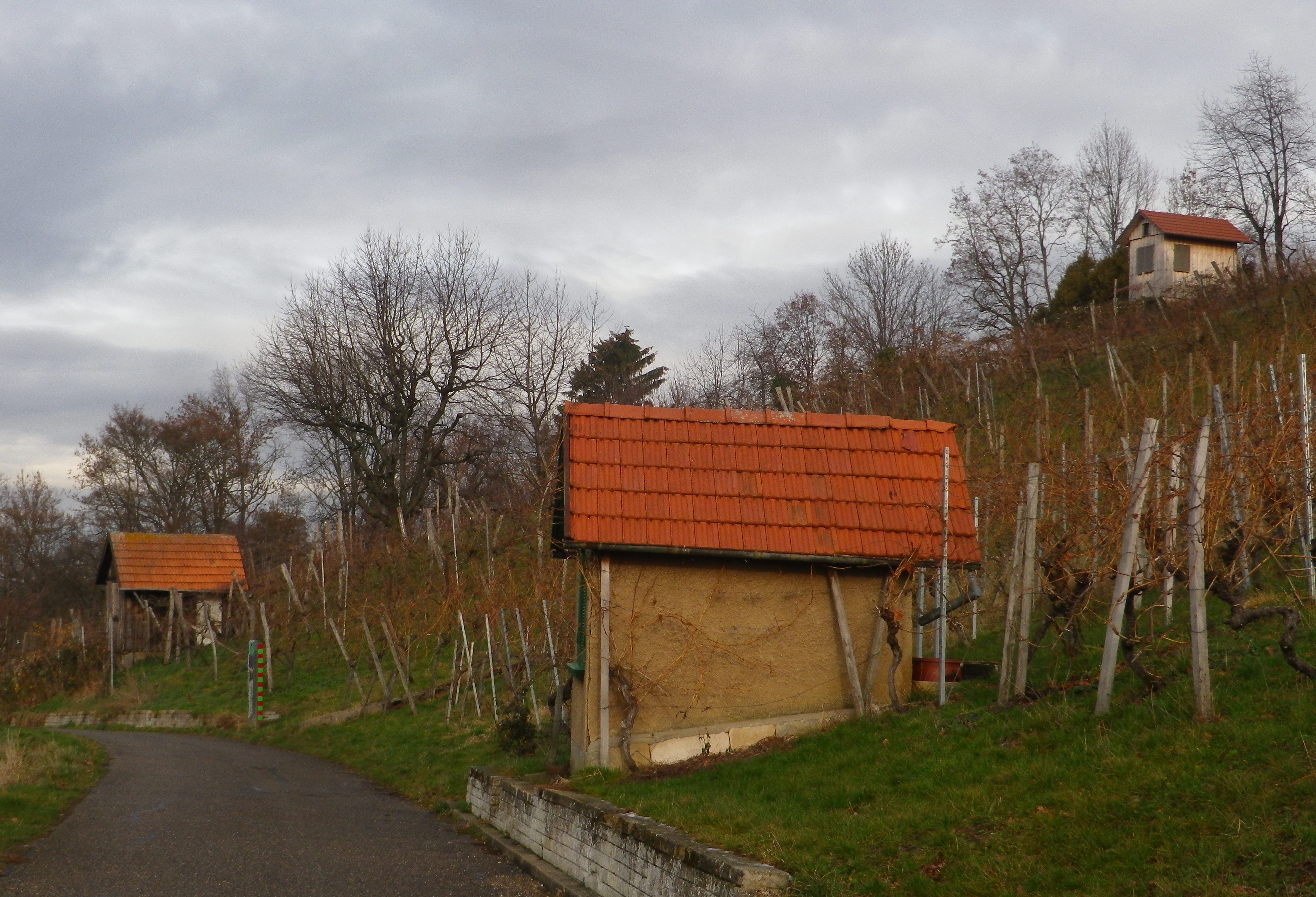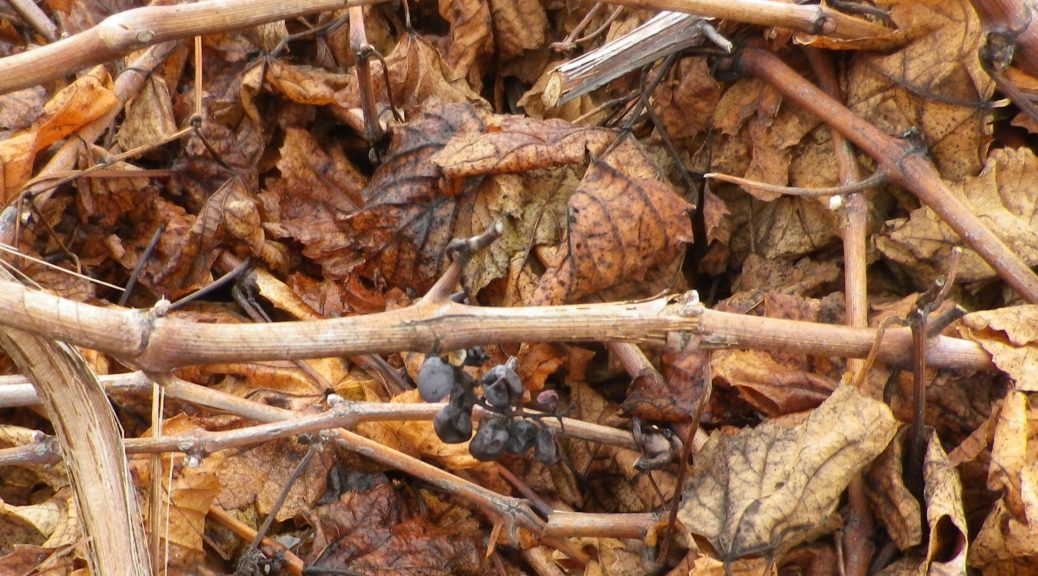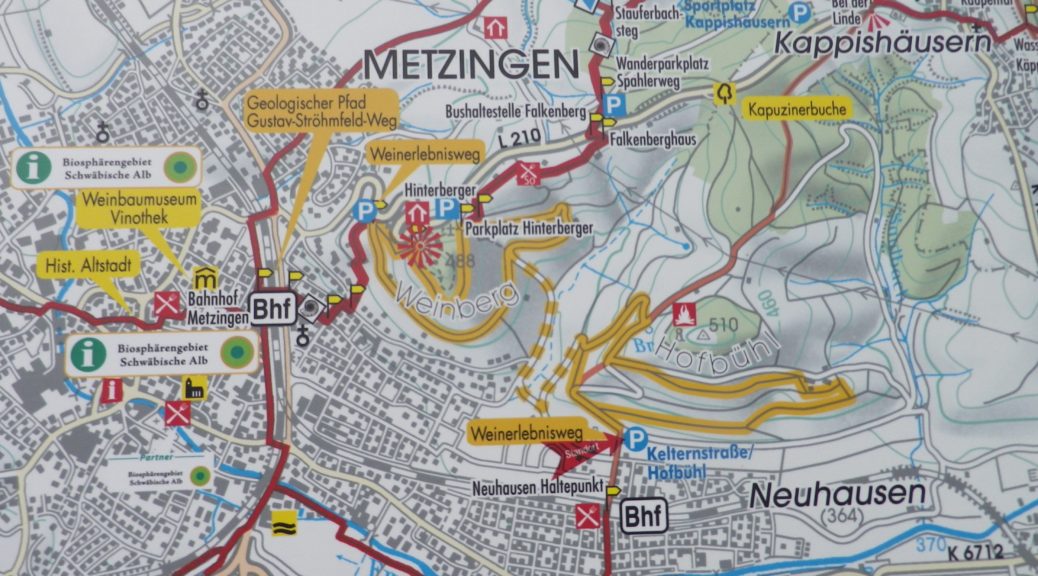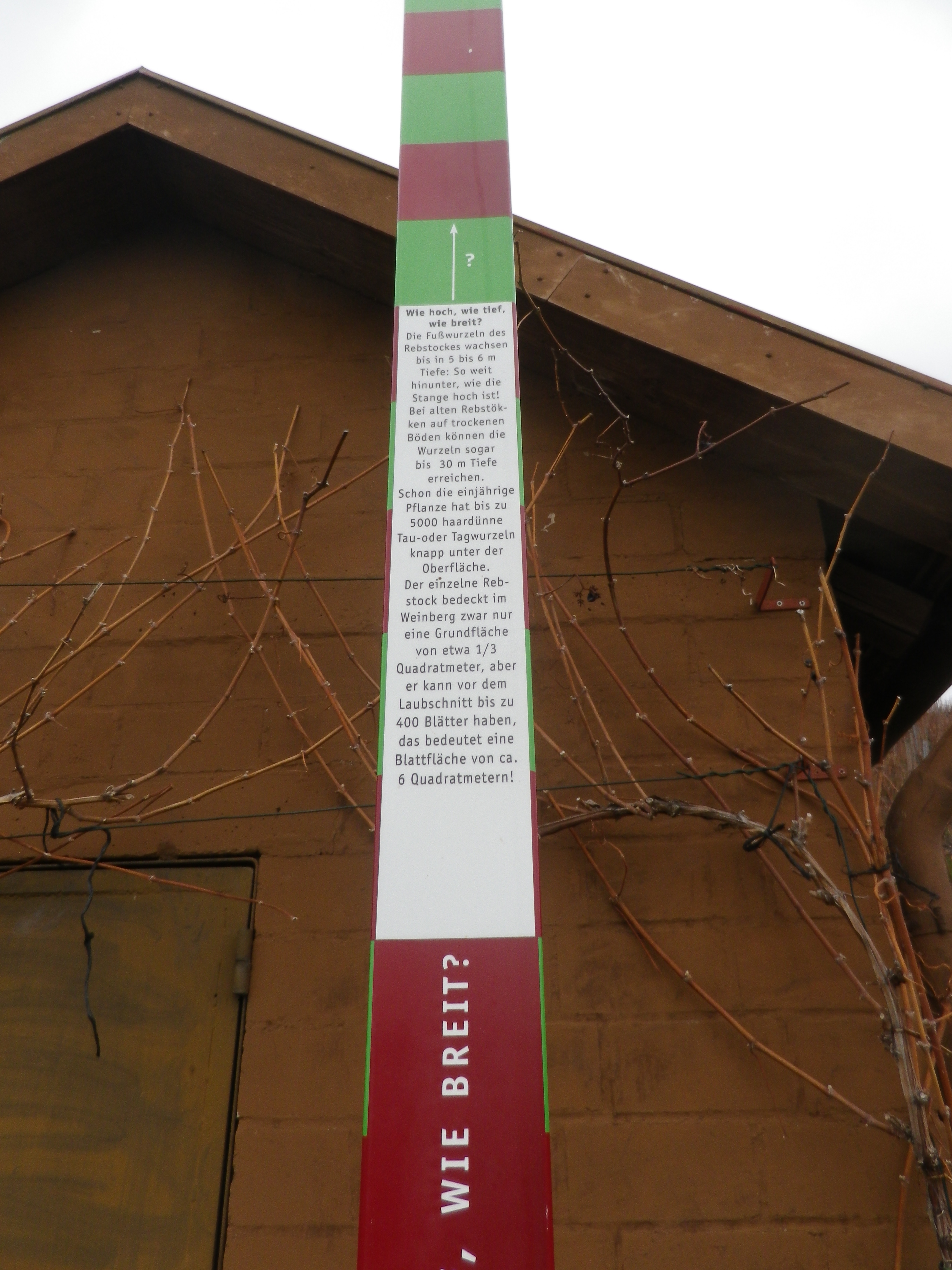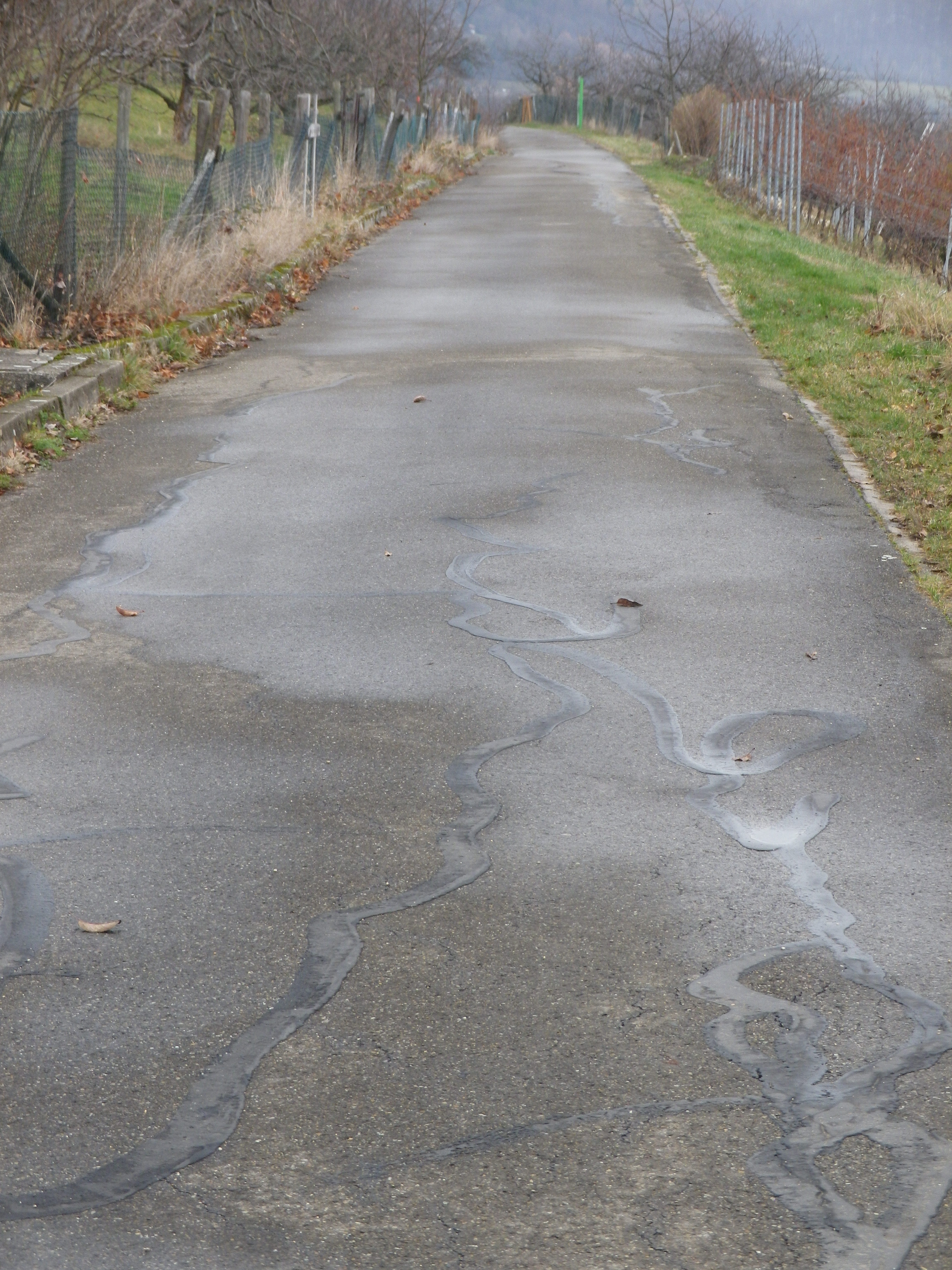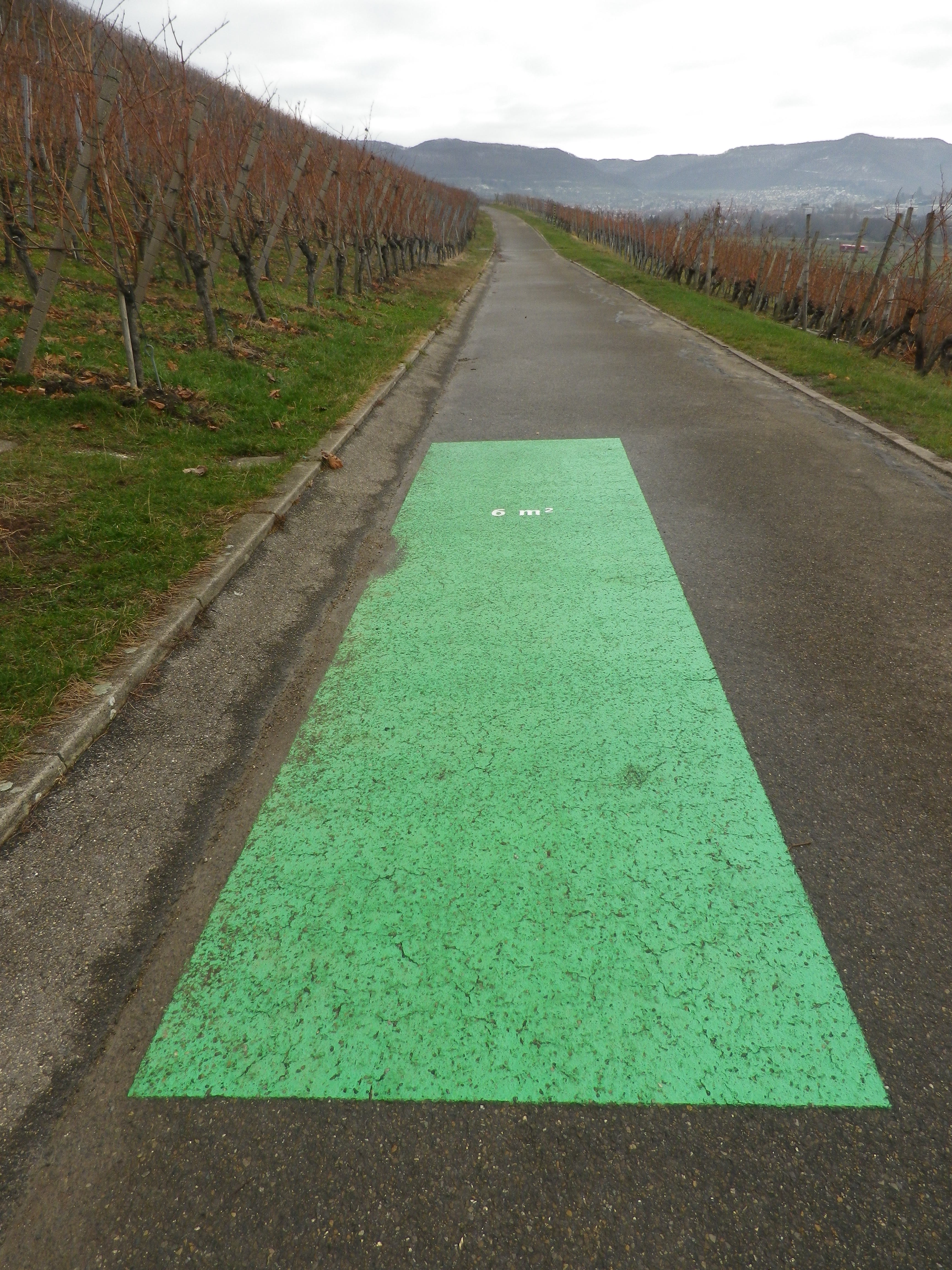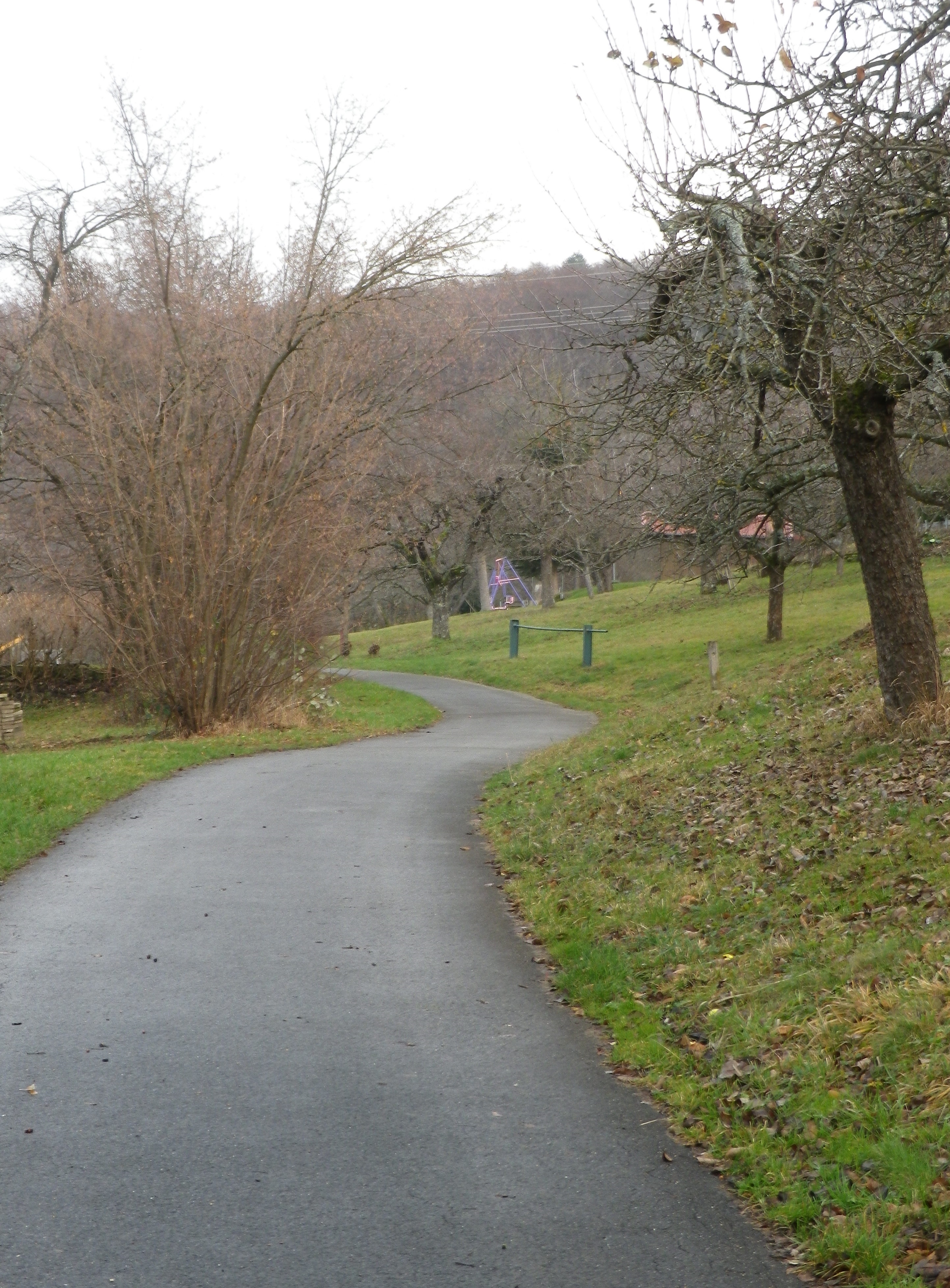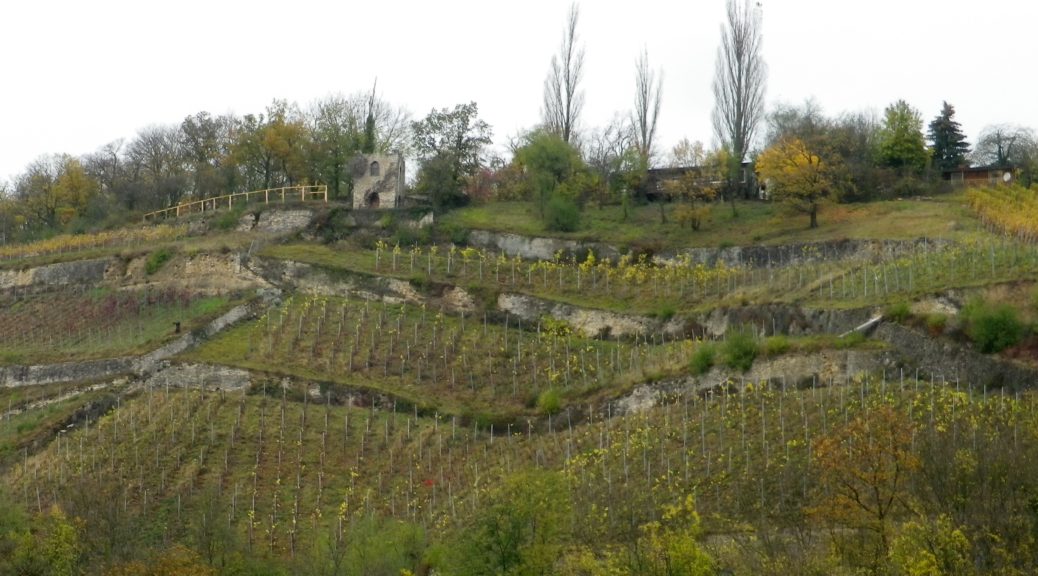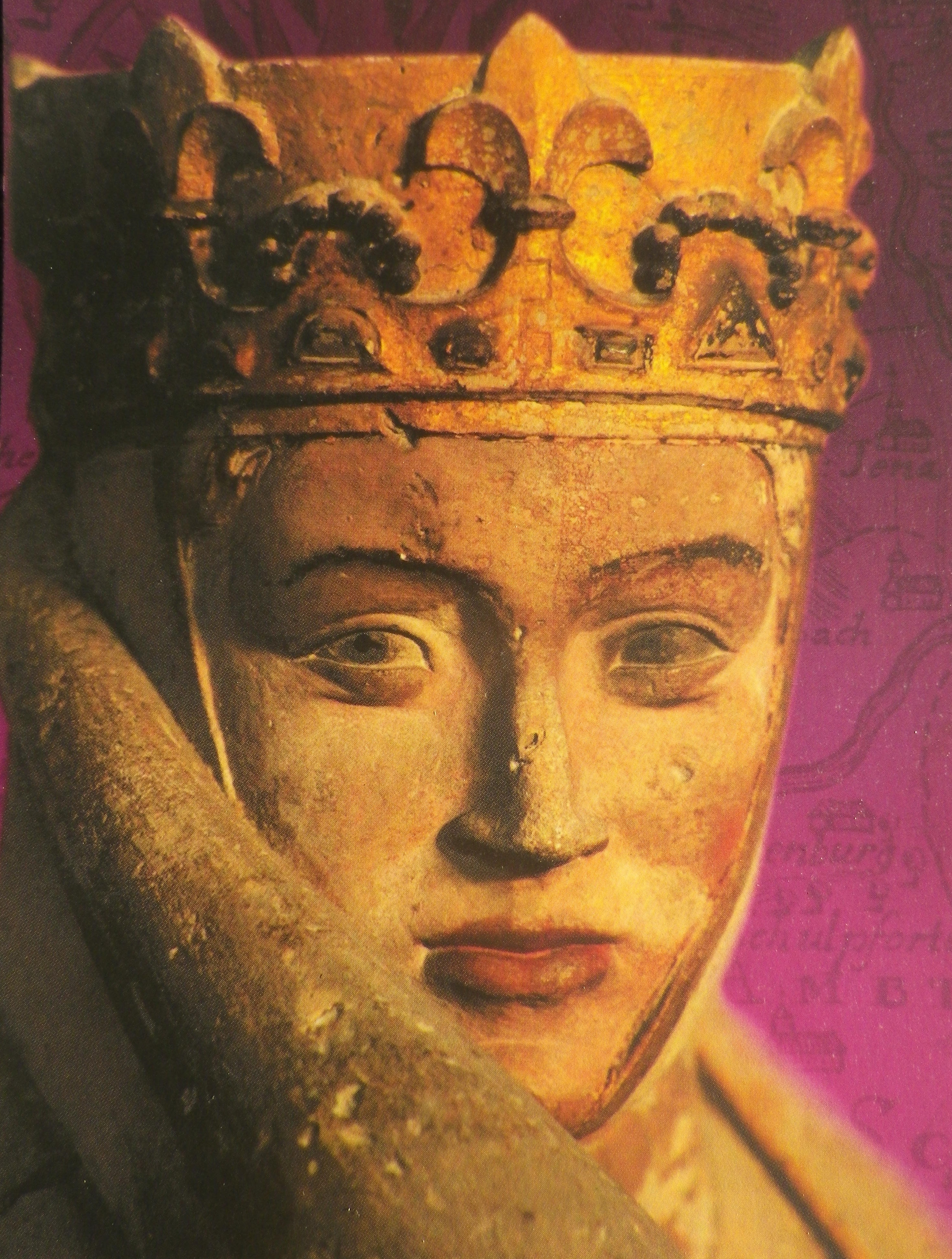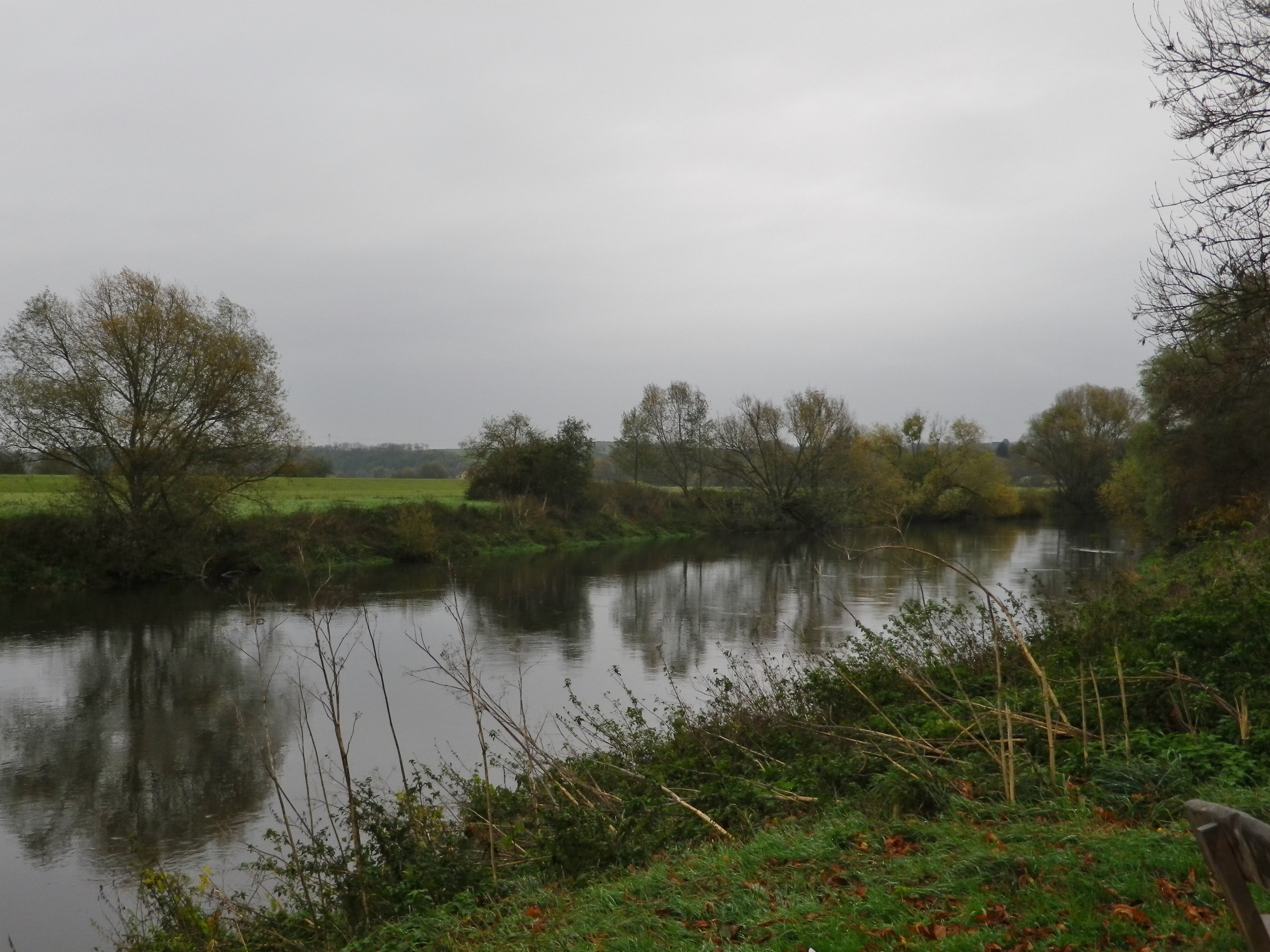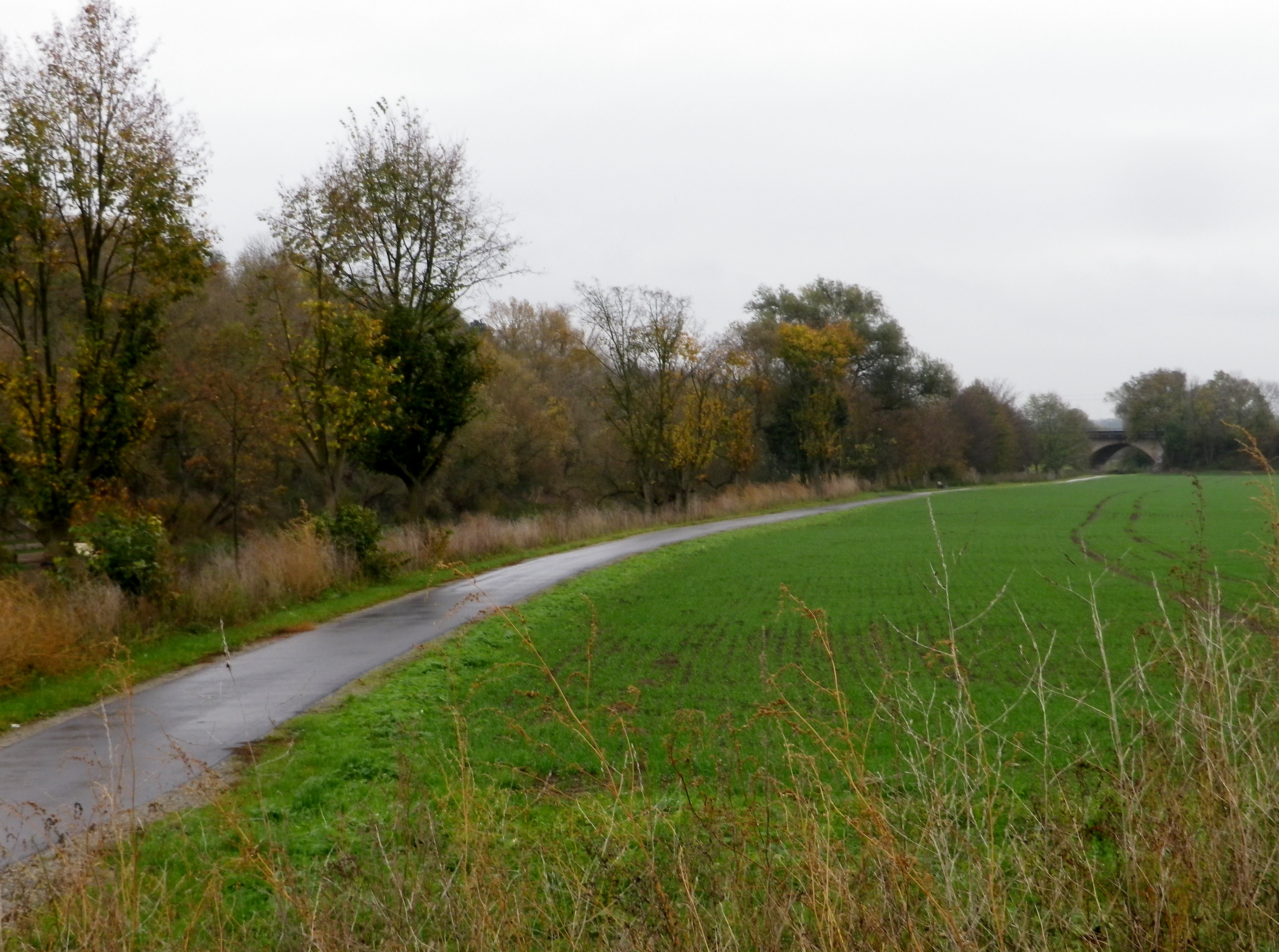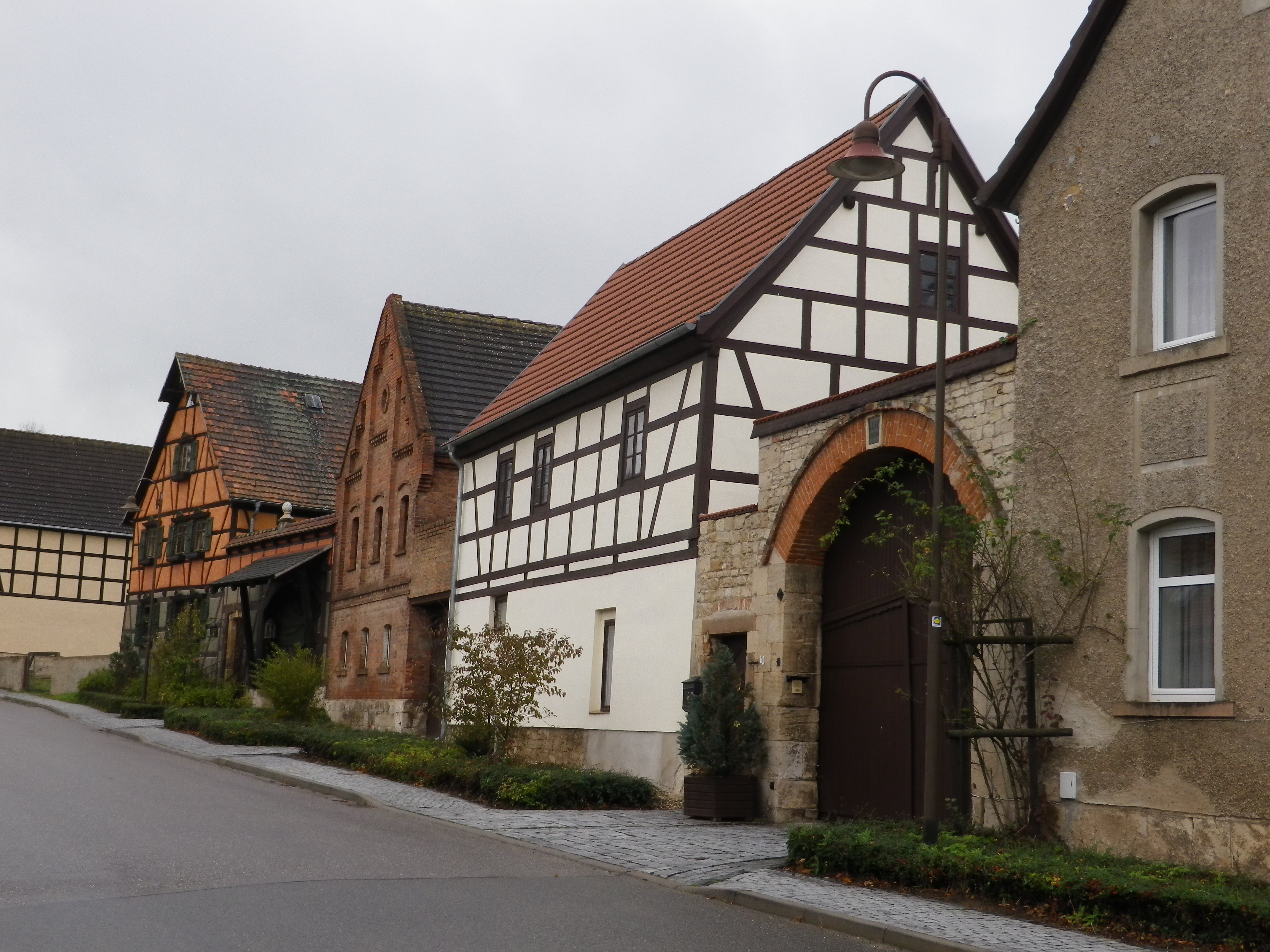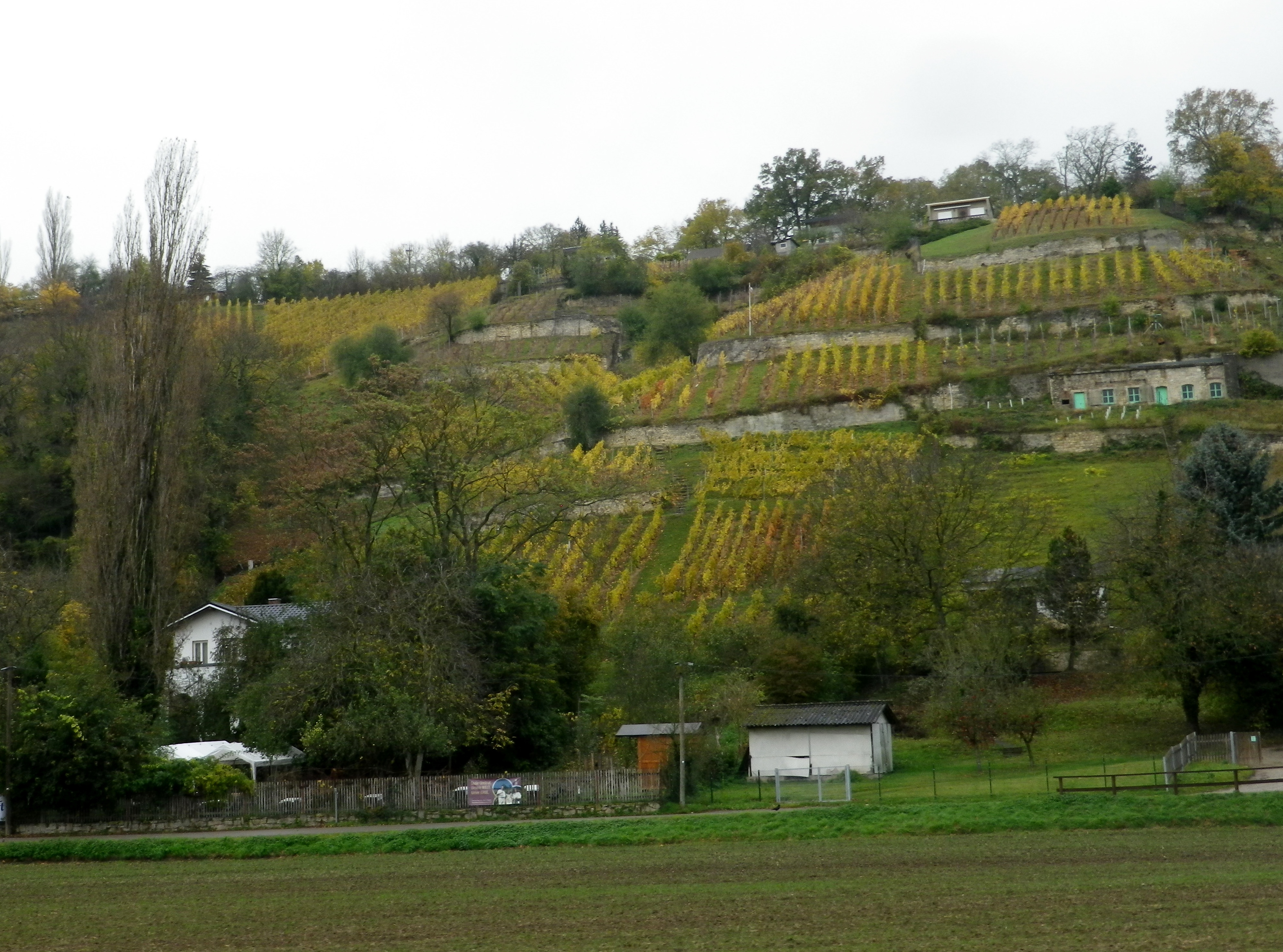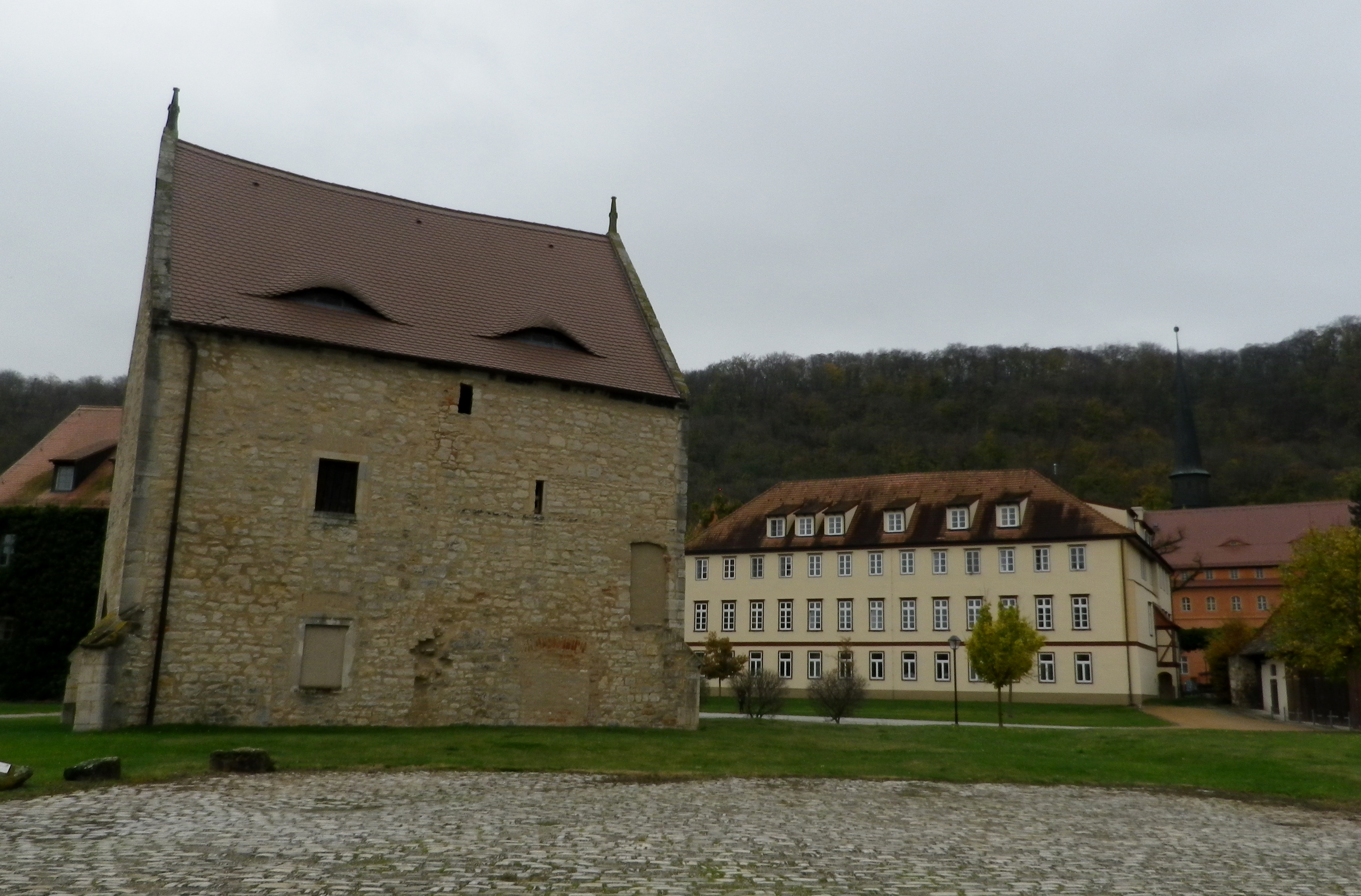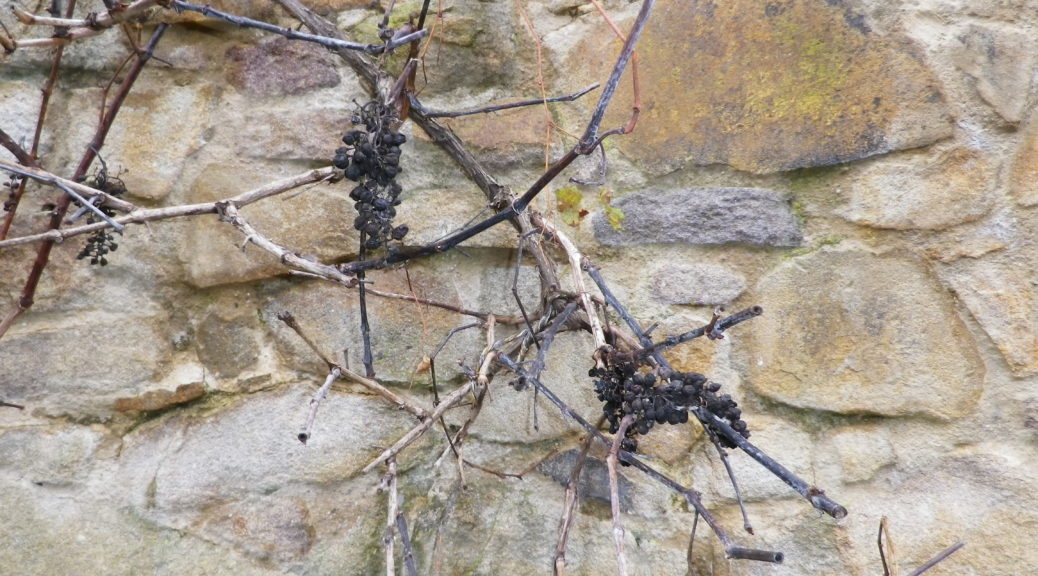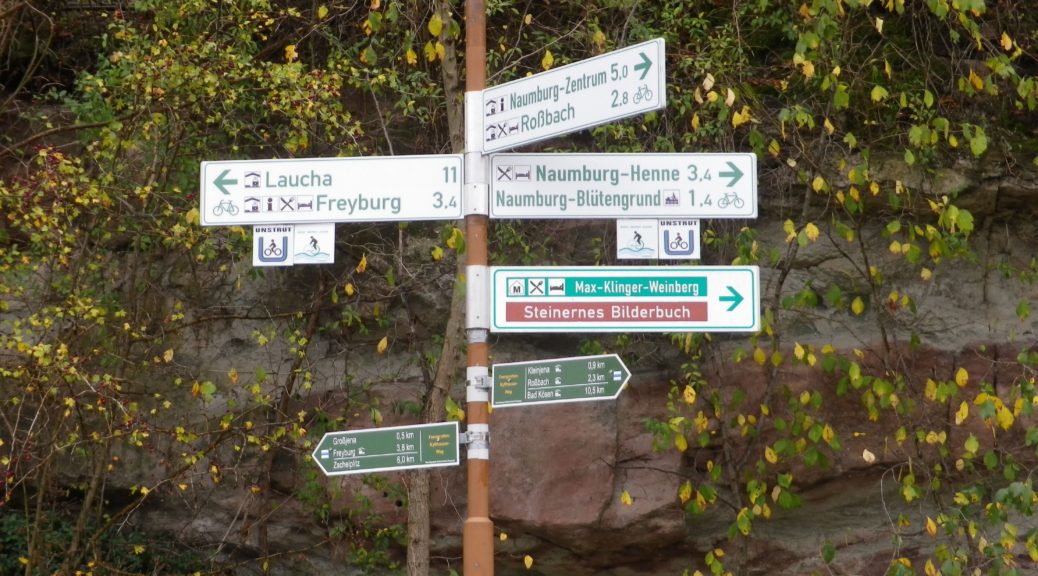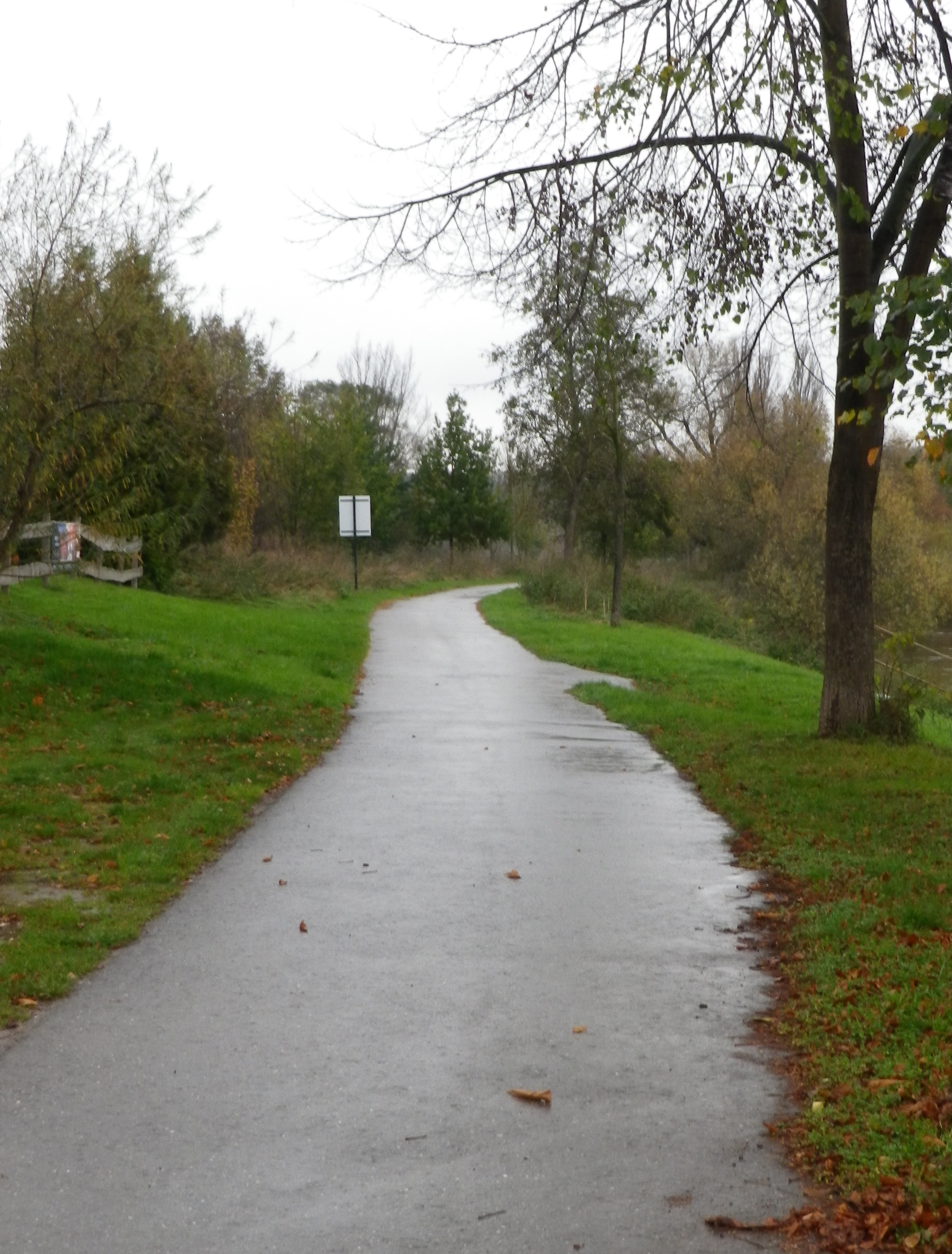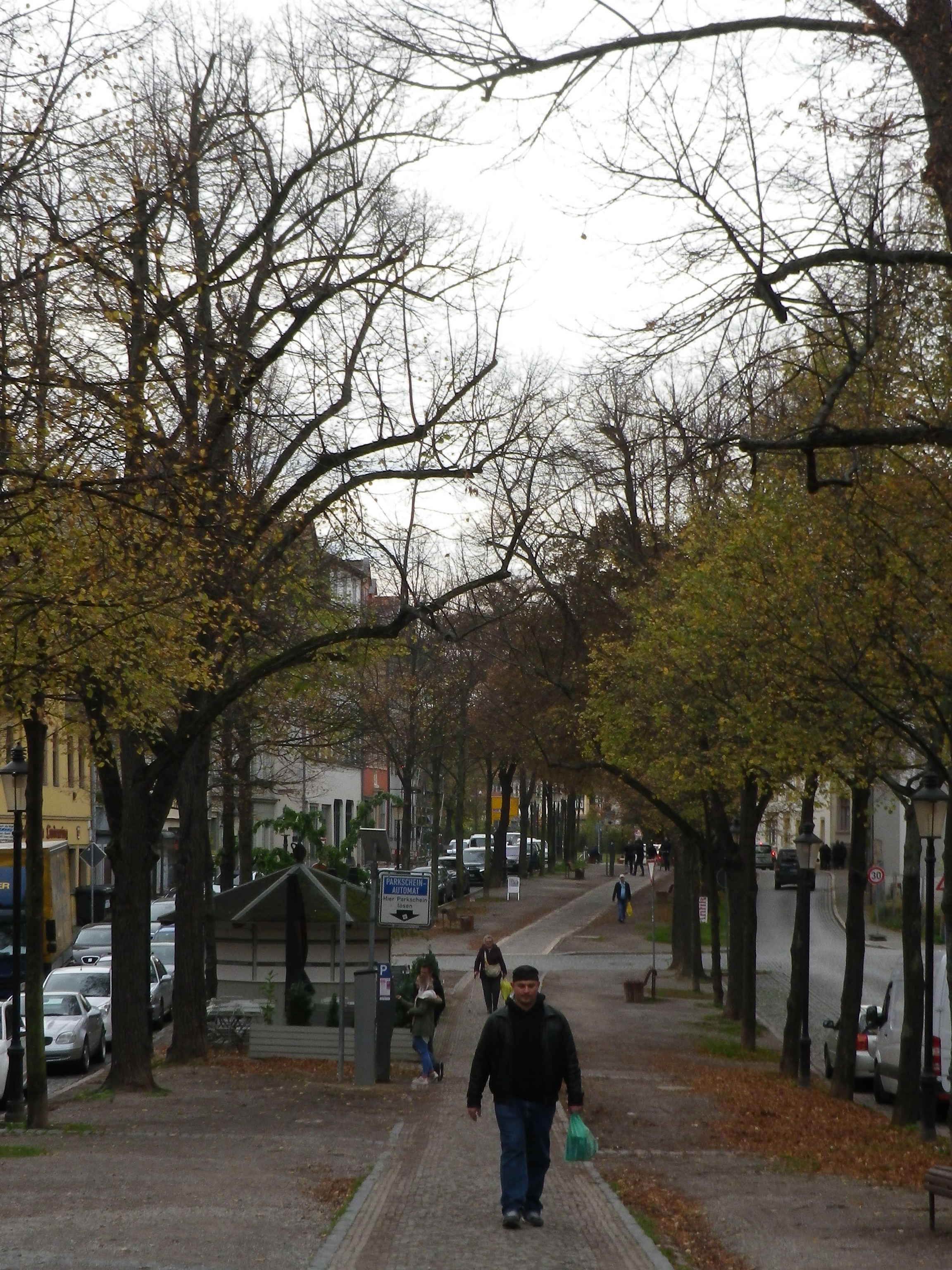The city of Schaffhausen in Switzerland earned its fame as the city of the Rheinfall, where the Rhine River tumbles and falls with a deafening roar over boulders as it curves through the cliffs lining the river. It is also the leading city of the canton, and the vineyards around it, and in nearby Hallau, and downriver, are also named after this city. Although it has these and several other claims to fame, it is not a heavily visited area on the Rhine.
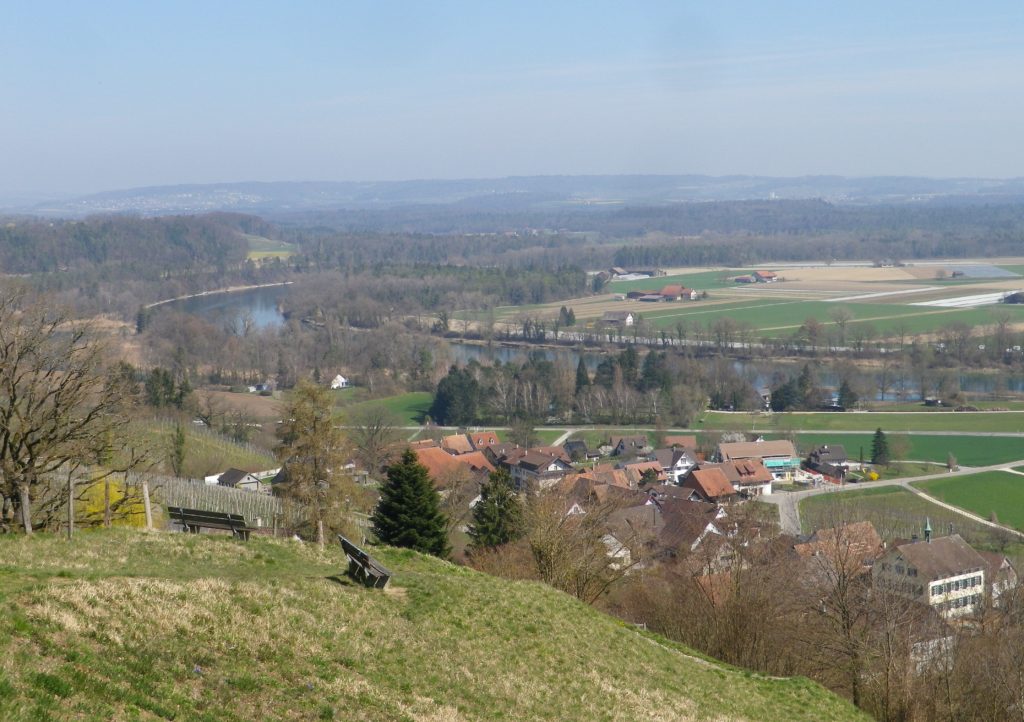
I made a quick visit to this canton in 2019 to complete a hike. It was an easy one, through largely flat terrain as it mostly meanders along the Rhine River. It starts in the German town of Jestetten, a pleasant little town to visit, set amongst the farms of this rural district. Along with the villages of Lottstetten and Altenburg, and the hamlets of Balm and Nack, Switzerland almost completely surrounds this enclave of Germany on the right bank of the Hochrhein (High Rhine).
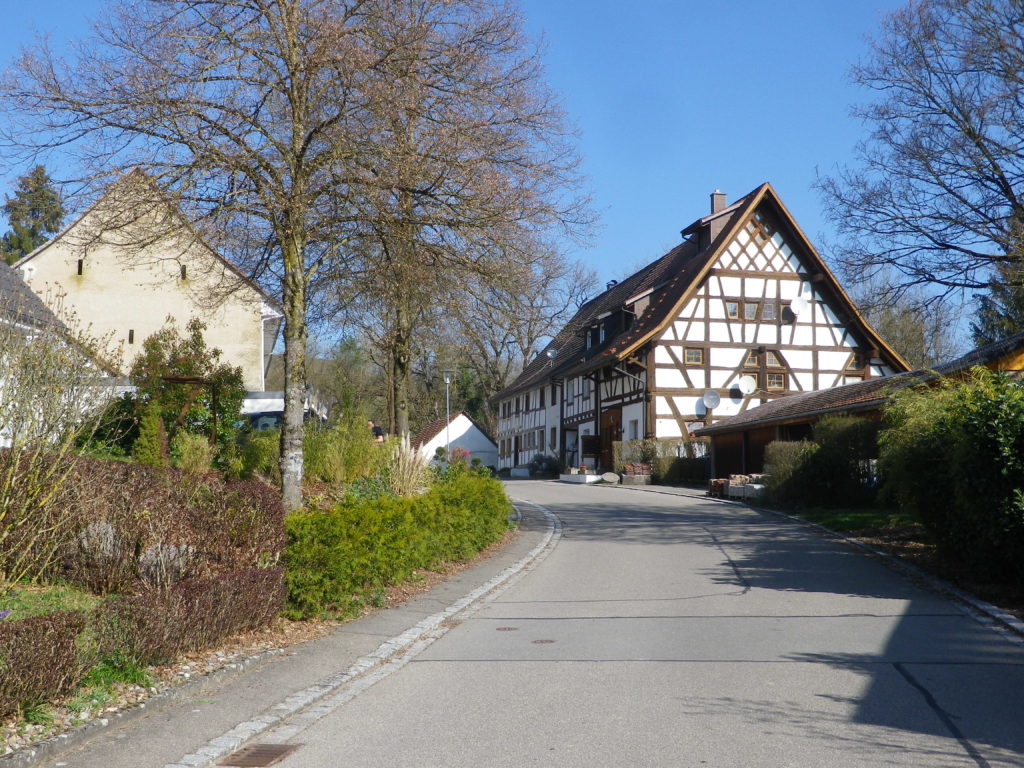
A steep descent to the “Roman” bridge (built circa 1696), led to the Volkenbach, a creek set in a dramatically narrow ravine. After climbing out of the ravine, the trail continued through woods, then fields. After Balm, the trail followed the Rhine in earnest, mostly through woods, with trees dedicated to former forest wardens, and bigger-than-life carved wooden fish commemorating generations of anglers, I suppose. For about seven kilometers (4.5 miles), the quiet sounds of riverine life prevailed: waves lapping against the shoreline stones, ducks and swans paddling through water, the occasional fish splashing about.
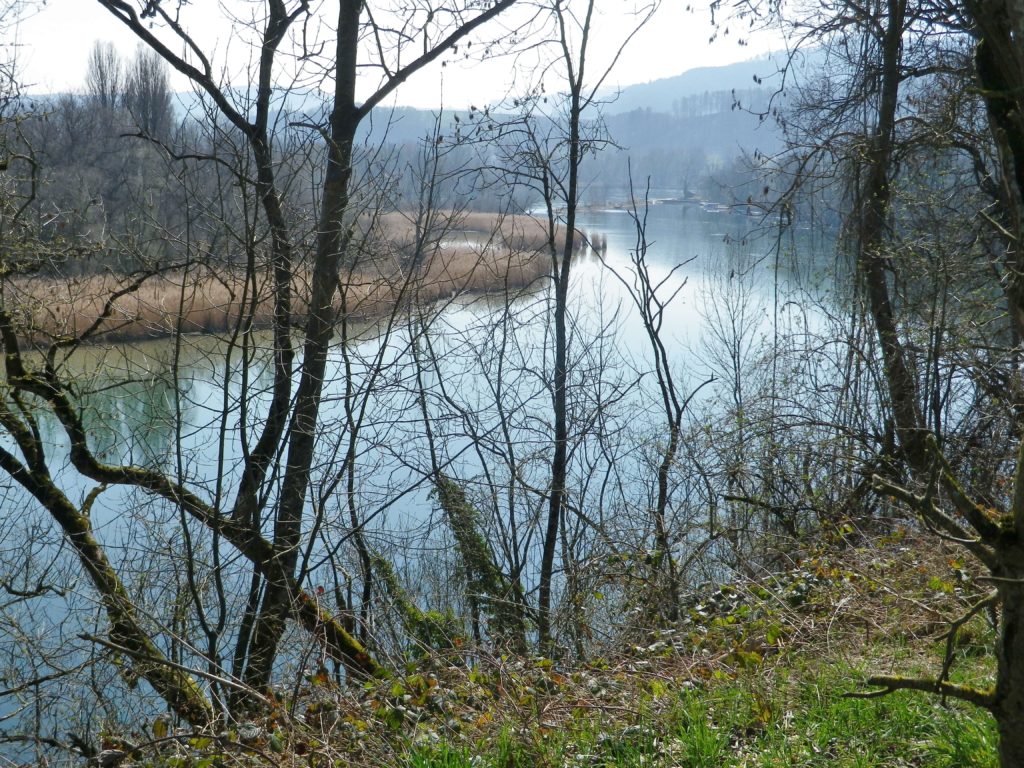
As soon as I crossed into Switzerland, a quirky sign of civilization appeared in the form of a bell. The accompanying sign warned would-be passengers to ring loudly for the ferry. On the opposite shore, in Ellikon am Rhein, were two little water-front restaurants or taverns. But at 10:30 the taverns were not yet open, so I sadly continued following downriver.
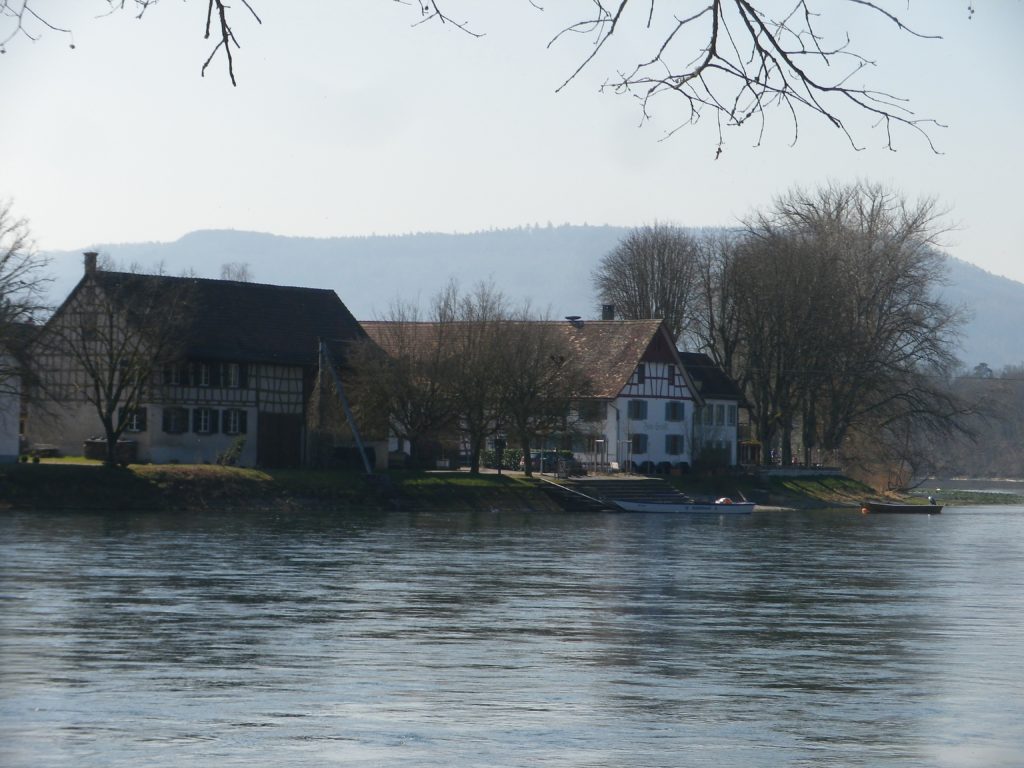
Just before the bridge crossing the Rhine (one of the few in this area), the trail cut away from the river, and quickly entered Ruedlingen. It was a small village, more like a settlement of farming families. It had an interesting center though. Set as it was against the steep Buchberg hill, at a curve in the Rhine, it seemed ideal for day-trippers to visit.
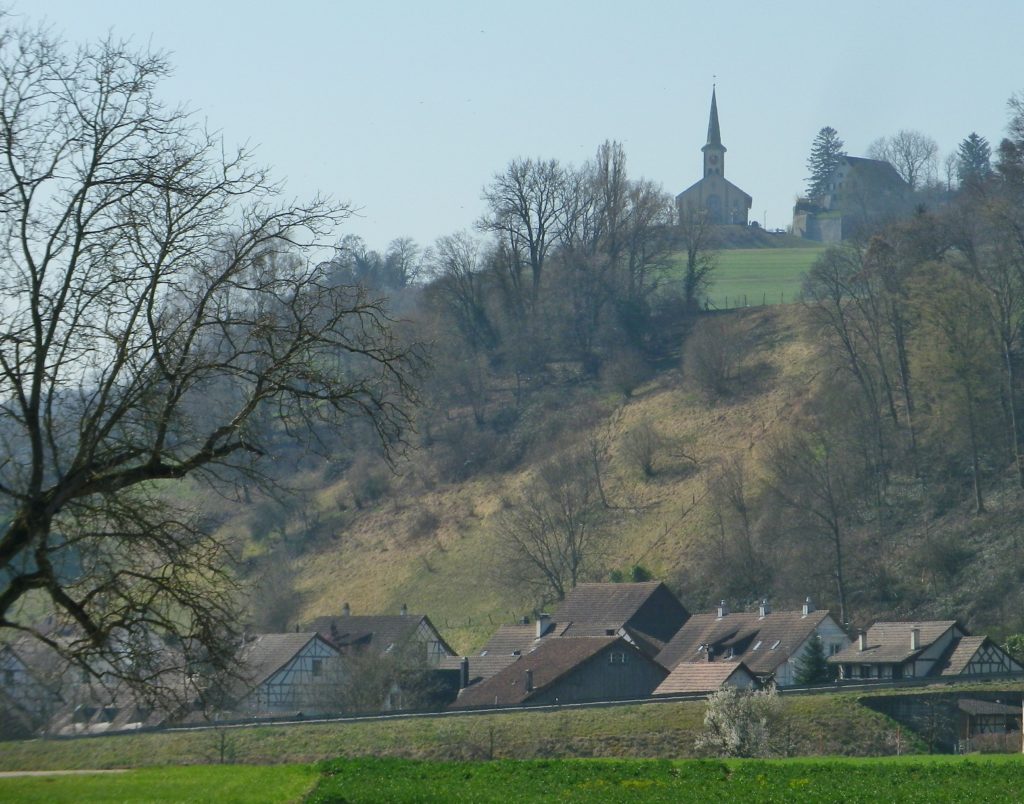
The ascent up the Buchberg was through vineyards. These were the last vineyards in the Schaffhausen Canton. They lie in a completely self-contained enclave of the Schaffhausen Canton within the Zurich Canton. The Baden wine region vineyards of Lottstetten lie to the north of them; the Zurich Canton vineyards surround them to the east and west.
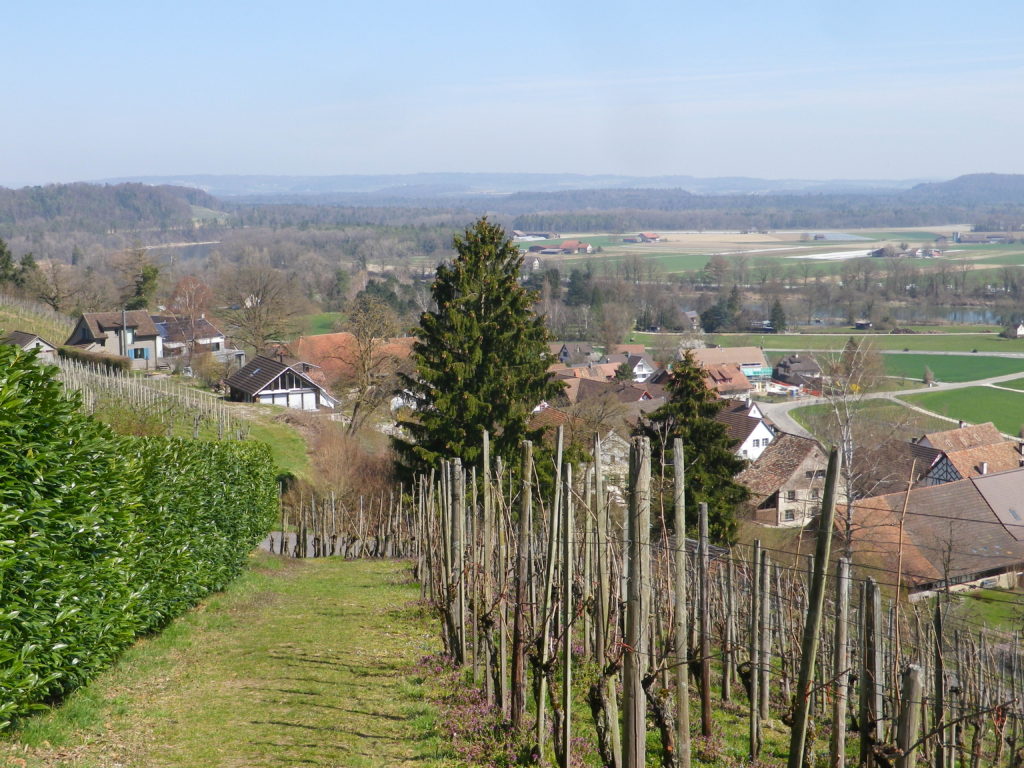
South though, lay steep hills (maybe mountains). Heavily wooded and appealing after the flatter lands by the river, they presaged an unseen Alpine presence less than 50 miles away. Those hikes will have to wait, but in the meantime, there is some Swiss wine to enjoy!
